|
DAVINCI - BATTLE OF ANGHIARI
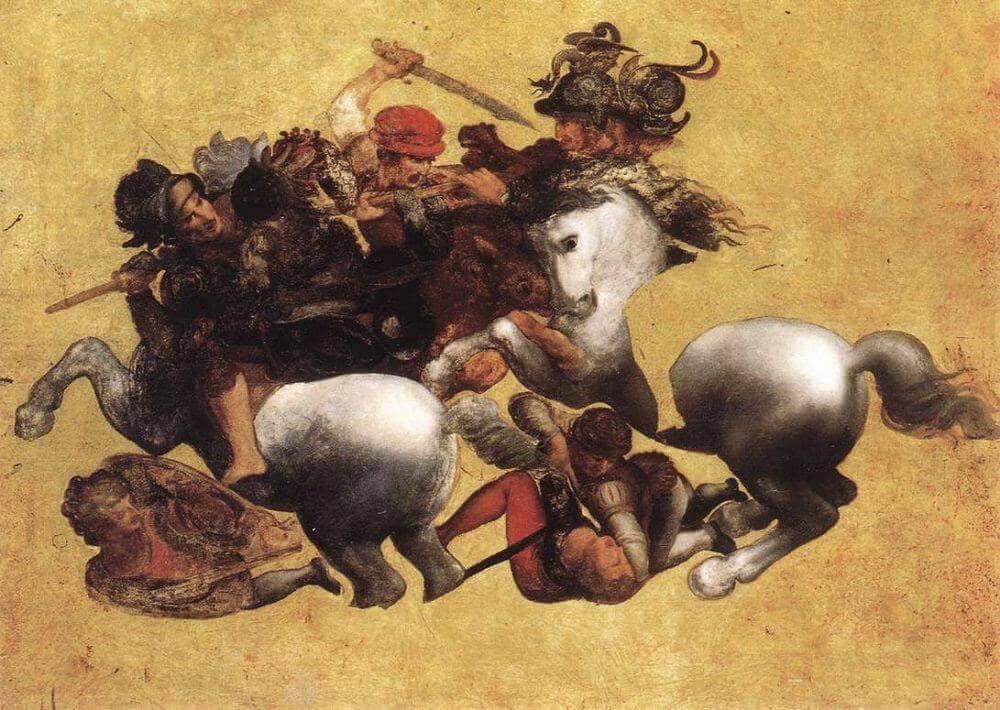
Leonardo da Vinci, Public domain, via Wikimedia Commons
1503–1505 |
- The Battle of Anghiari is a lost
painting referred to as, 'The Lost Leonardo.'
- The oil
painting showcases
the Italian 15th-century Florence victory over Milan which
took place on June 29, 1440.
-
Over 60 years after the battle, in 1503, Florence’s Gonfaloniere of Justice, Piero Soderini, commissioned Leonardo da Vinci to decorate the walls of the newly-built
Hall of the Five Hundred (Salone di Cinquecento) in the town hall, the magnificent Palazzo Vecchio.
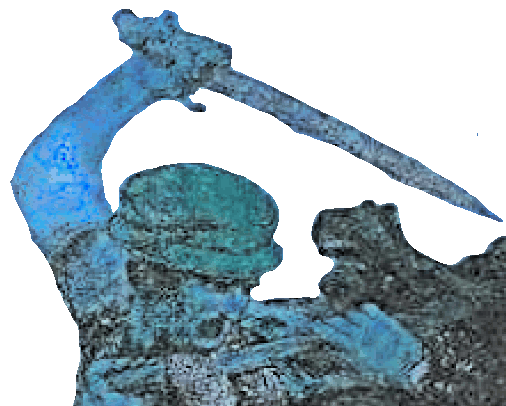
Florentine victories |
- The mural was to be a large-scale painting, measuring 54' by 21'
residing on a 174' long wall.
- It depicted the beginning, middle, and end of the battle.
-
Leonardo worked on the project from 1503 to 1506.
- He spent more than a year working on the rough drafts
and then painted a section of the wall called the 'fight for the standard.'
- It portrayed a group of four horsemen who are wrestling for the Milanese banner, two infantrymen locked in combat, and a third soldier on the ground, beneath a horse’s hooves.
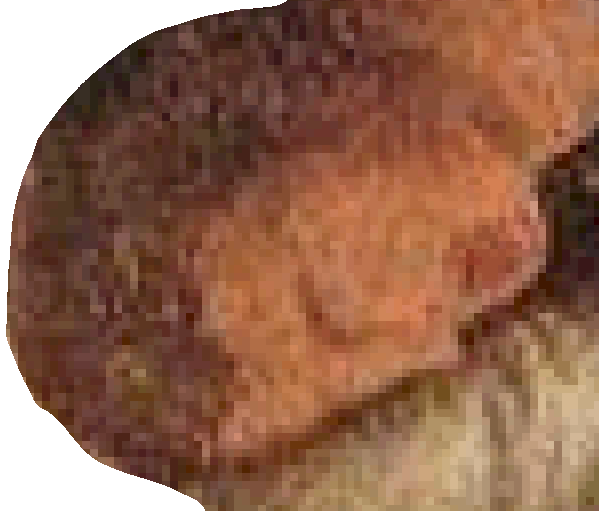
Man down |
- The painting was to include a facing fresco by Michelangelo depicting the Battle of Cascina
which was fought on July 28, 1364, between the troops of
Florence and Pisa, resulting in victory of Florence.
- Michelangelo never completed the painting, but did produce a complete cartoon of the composition.
- The two battles were notable medieval Florentine victories.
First you must represent the smoke of artillery
mingling in the air with the dust tossed up by the
movement of horses and the combatants. The finest part
of the dust rises highest; hence that part will be
least visible and will look almost the same colour as
the air… At the top, where the smoke is more separate
from the dust, the smoke will assume a bluish tinge.
Make the little clouds of dust distant from each other
in proportion to the strides made by the galloping
horses, and the clouds which are furthest removed from
the horses should be least visible; make them high and
spreading and thin, and the nearer ones will be more
conspicuous and smaller and denser. (Leonardo
da Vinci) |
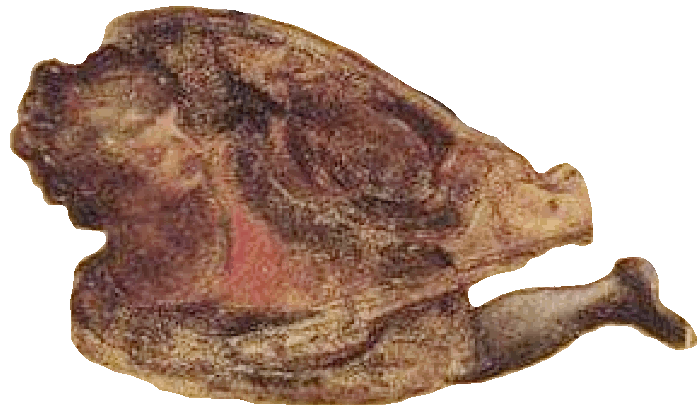
Fallen warrior |
- Leonardo's experimental techniques and use of oil paints led to the painting's destruction.
-
He used an oil painting technique similar to encaustic painting, lighting
bonfires to dry the fresco, but the paint was unstable and the heat greatly damaged the
finished results.
Leonardo decided to paint the fresco using the encaustic painting technique which is also known as hot wax painting. This technique uses heated beeswax to which coloured pigments are added. Unfortunately, the procedure didn’t have the expected result: the heat couldn’t be spread out evenly over the fresco and, probably because of its large dimensions, the artwork was irreparably damaged. (thistuscanlife.com) |
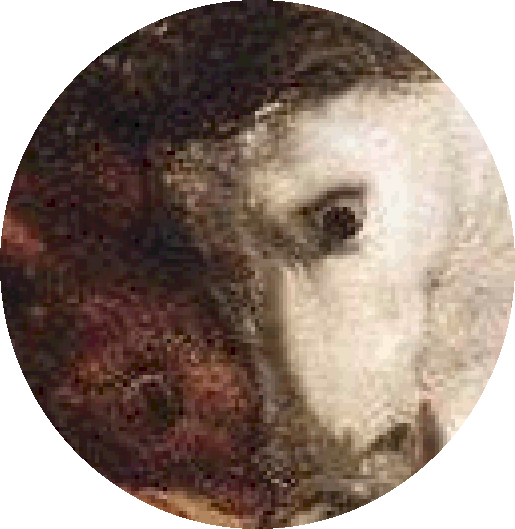
War horses |
- Some believe
that the mural is still hidden beneath later frescoes in the
Hall of Five Hundred in the Palazzo Vecchio.
- The known portion of the painting depicted a battle over a standard between knights on opposing sides.
- The central scene depicted three men riding raging war horses engaged in a battle.
The leaders of Florence city wished to celebrate their 1440 victory over Milan, one of the greatest triumphs on their battlefield, with an art mural of Leonardo. As their intent remained to exalt the glory of the soldiers and warriors, Leonardo, who also had a closer experience of war as he was a military engineer, aimed to create something complex but profound. (Mahima Sharma) |
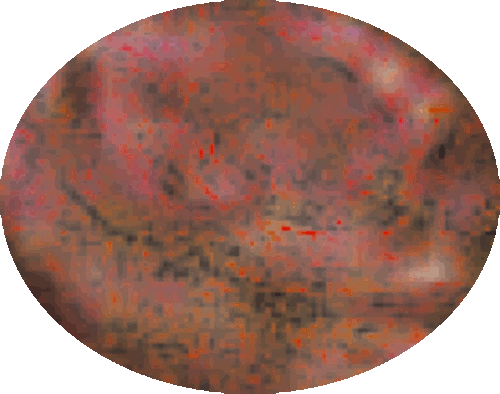
Softer, more luminous technique |
- Leonardo experimented with oil paints to achieve a softer, more luminous look than traditional fresco techniques.
- He also designed an innovative scissor-type moveable scaffolding to reach the upper portion of the painting.
- Leonardo performed a trial run on the project and applied
the paints to a wood panel and allowed it to dry, however, the
results on the wall were disastrous and he abandoned the
mural.
An ambitious painting, Leonardo used a type of plaster that he read about in a book by Pliny, with the unfortunate result that the work he had barely begun was irreparably ruined. Problems started as soon as Leonardo placed his brush to the wall at 9 am. The weather turned bad, the sky opened and it rained then on until nightfall. The sudden humidity liquefied the paste holding the cartoon in position; as Leonardo lifted his hand to start work the cartoon slid to the floor and tore. (leonardodavinci.net) |
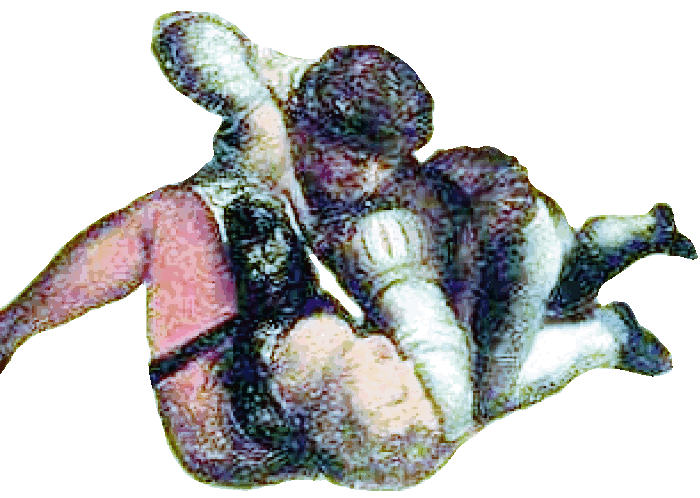
Wrestle |
- However, while some claim Leonardo
never painted the battle scene on the wall, there are others who
feel
that Leonardo did paint the mural and they witnessed the results, although
admittedly incomplete.
- Paolo Giovio saw the remains of the painting on the Palazzo Vecchio walls and left a vivid description of it in his biography of Leonardo’s life, written between 1523 and 1527.
- There are at least 3 other testimonies to Giovio.
In the Florentine Seigniory Council Hall remains a battle and victory over the Pisans, magnificent but unfortunately unfinished due to a defect in the plaster that rejected with singular persistence the colors dissolved in walnut oil. But the disappointment for the unexpected damage seems to have extraordinarily increased the charm of the unfinished work. (freemindpublications.com) |
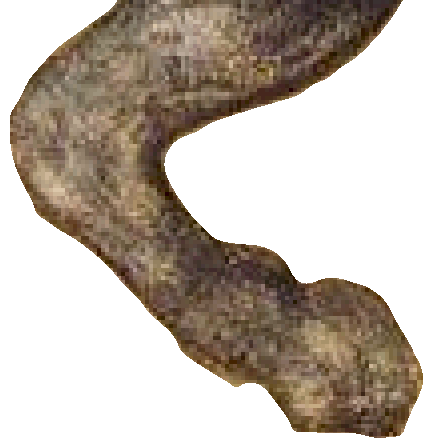
War horse kick |
- Evidence uncovered during research conducted in Florence’s Palazzo Vecchio
in 2011 supports the theory that a lost painting existed on the east wall, behind Giorgio Vasari’s mural,
'The Battle of Marciano.'
- But that has also recently
been contested, with some claiming that DaVinci never even
started the mural.
- Regardless, to date, it hasn't been
found.
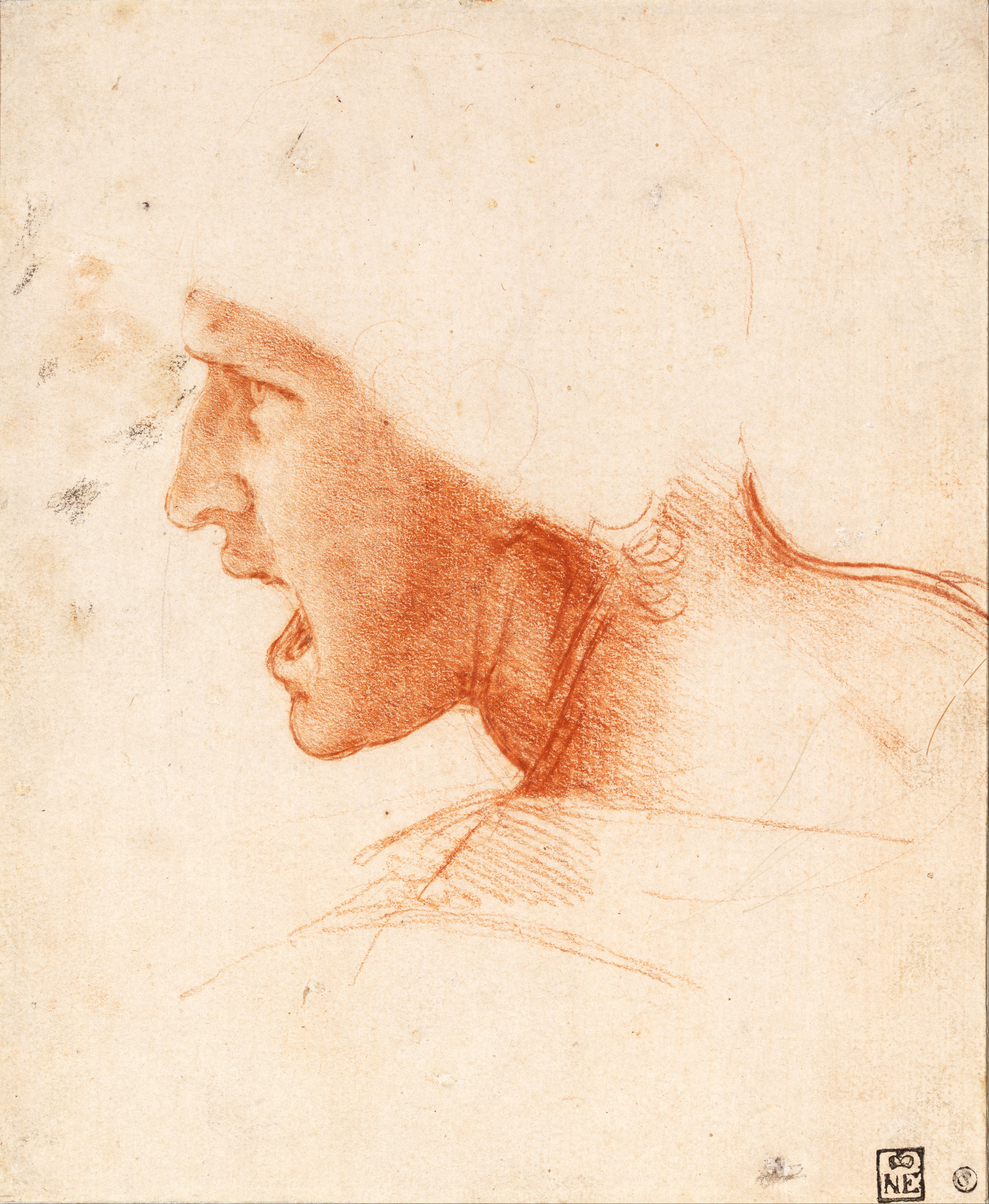
Leonardo da Vinci, Public domain, via Wikimedia Commons
Study of warrior's head
1503–1505 |
-
Many preparatory studies by Leonardo still exist as well as
individual sketches such as the warrior's head.
- Red chalk on very pale pink prepared paper.
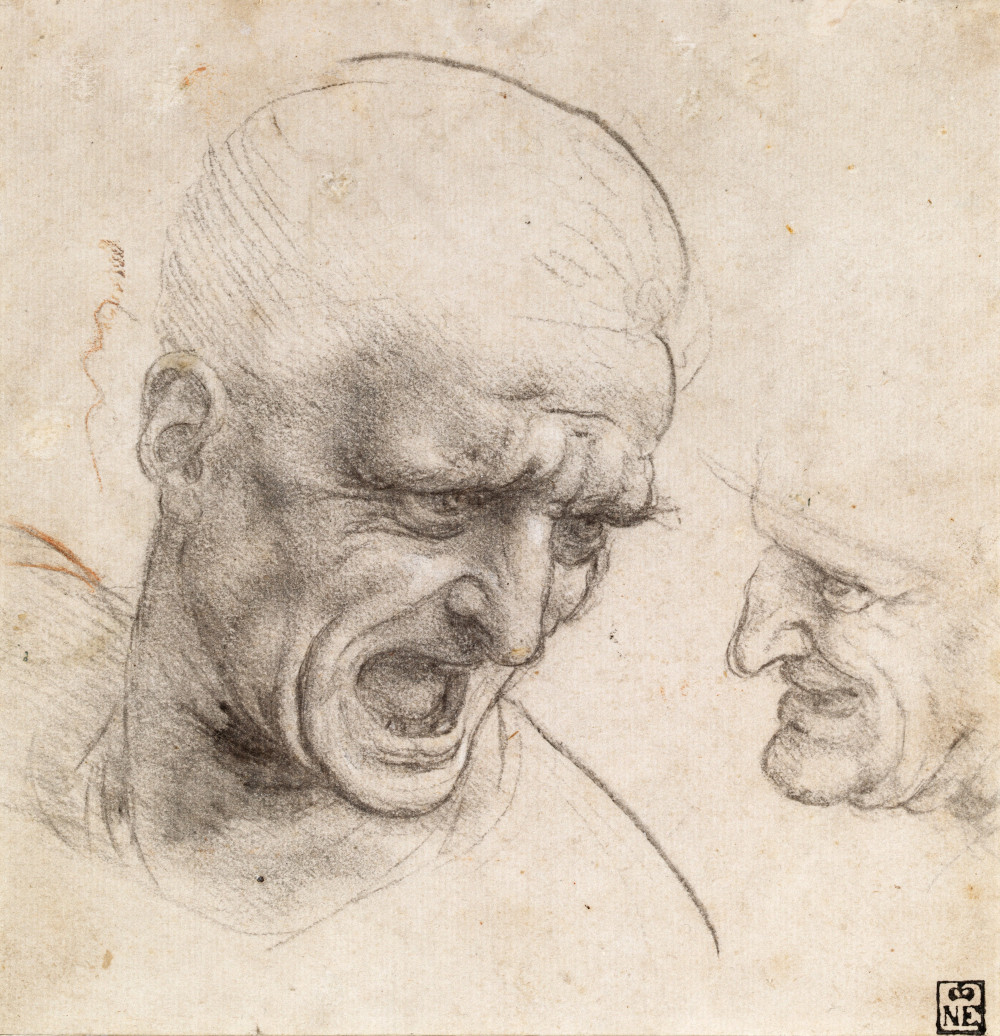
Leonardo da Vinci, Public domain, via Wikimedia Commons
Study of two warrior's heads 1503–1505 |
- Black chalk or charcoal, some traces of red chalk on paper.
- The initial sketches dates back to 1503.
- In May 1504, Leonardo signed a revised contract of the commission, but due to certain reasons, the painting was never completed.
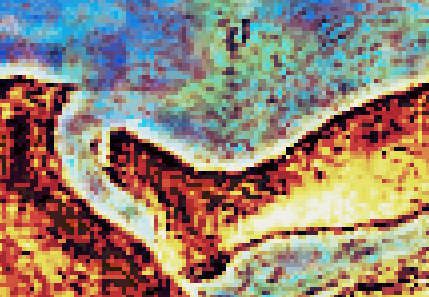
Leonardo leaves for Milan |
- Following this disastrous attempt, Leonardo put the work on hold and left for Milan.
- His incomplete masterpiece was then buried beneath frescoes by Giorgio Vasari, who was executing structural and decorative changes ordered by Cosimo de’ Medici,
a huge patron of the arts in Florence.
- On the eastern wall of the hall, the third fresco of the Siena War depicts the decisive battle of Marciano, also known as the Battle of Scannagallo in Val di Chiana.
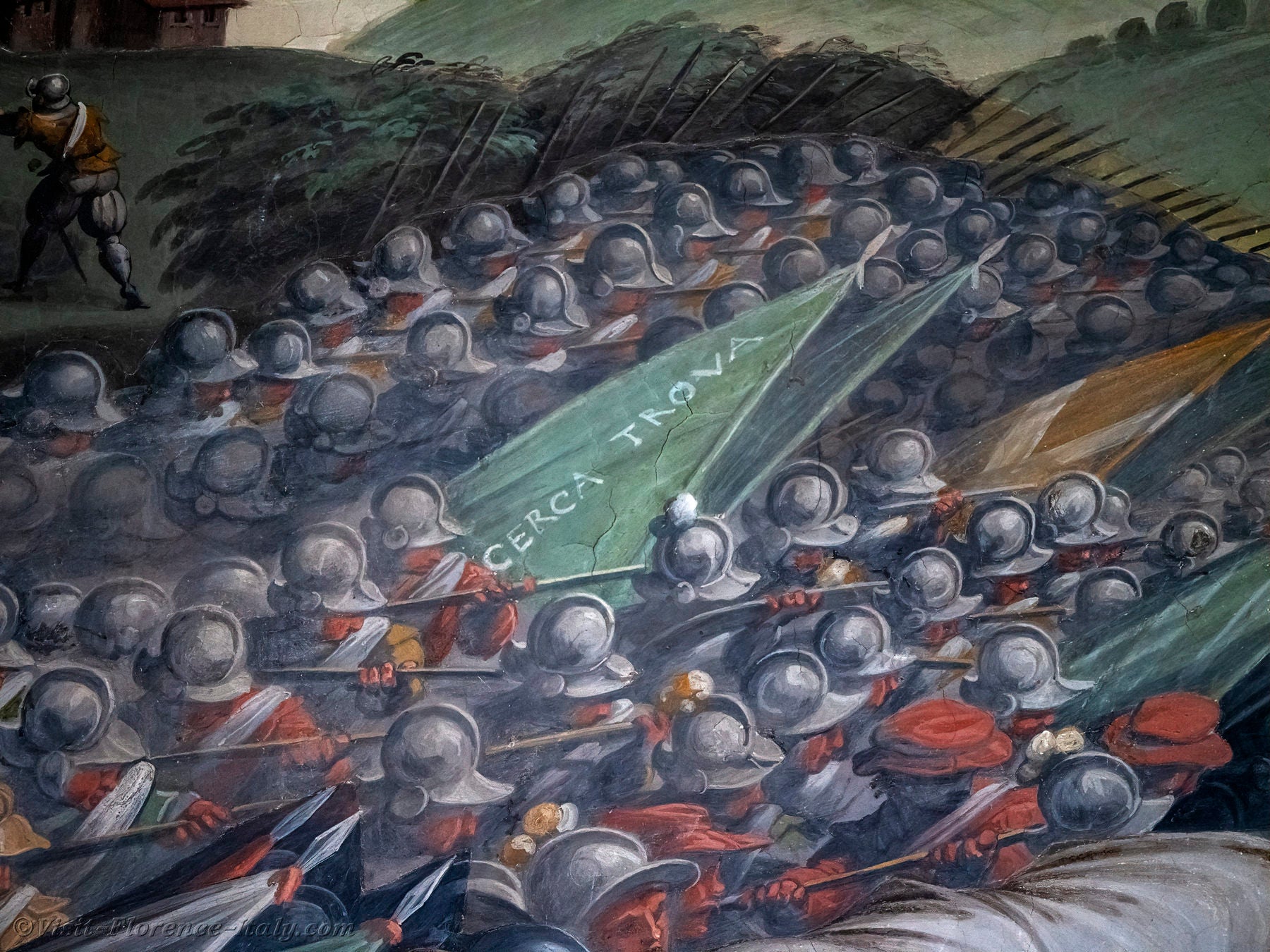
Giorgio Vasari - Battle of Marciano |
- The fresco of this battle of Marciano also became famous
because of the inscription that can be seen on one of the
enemy banners, 'Cerca Trova, Who Seeks Find' or 'seek and you
shall find.'
- It appears in a 16th-century fresco by Giorgio Vasari in the Palazzo Vecchio in Florence.
- In 2020, the hypothesis of a battle of Anghiari
by Leonardo da Vinci hidden under the fresco of Vasari was definitely ruled out.
Vasari's frescoes in the Hall of Five Cents of Palazzo Vecchio had no other purpose but to affirm the greatness of Duke Cosimo I, and for this reason, the inscription “Cerca Trova” can only be seen in this context as an element of political propaganda, without hidden mystery. (visit-florence-italy.com) |
|
The Florentine Battle of Anghiari |
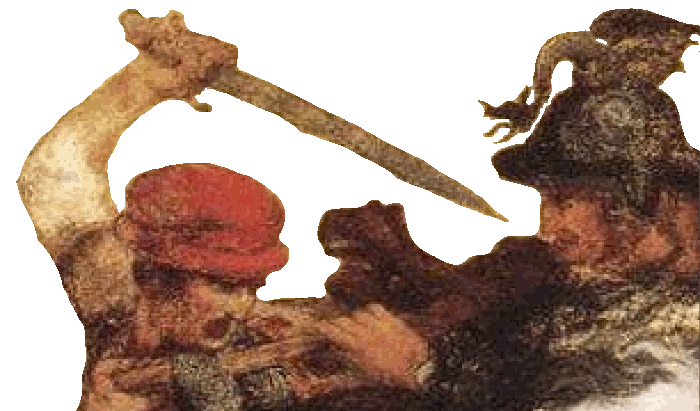
Military victory |
- During the Middle Ages, due to its
strategic position, Anghiari played an important role that
would set its name in history when it was the location for the
famous Battle of Anghiari.
- The battle was a military
victory for the Republic of Florence over the Milanese army
and took place on June 29, 1440, in the valley below the hilltop town of Anghiari, in the province of Arezzo.
It is also remarkable for the fact that though the battle lasted all day, involving several thousand troops, it was said that only one soldier was killed. According to Niccolò Machiavelli, after four hours of skirmishing, the single death occurred "when a soldier fell off his horse." (Wikipedia) |
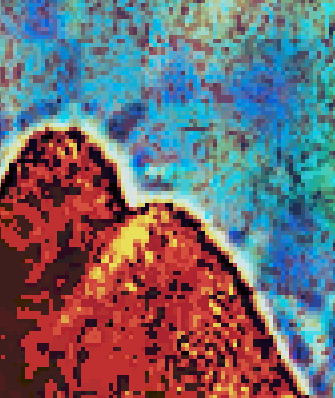
Tuscan life |
- Anghiari is located on a hilltop between the Arno and Tiber Rivers.
-
The battle itself was in the Tiber valley below the town and was a victory for the Florentine Republic and its unofficial leader Cosimo the Elder.
Anghiari is a small medieval jewel set on a hill made of stone built up over the centuries from the Tiber River at its feet. (visittuscany.com) |
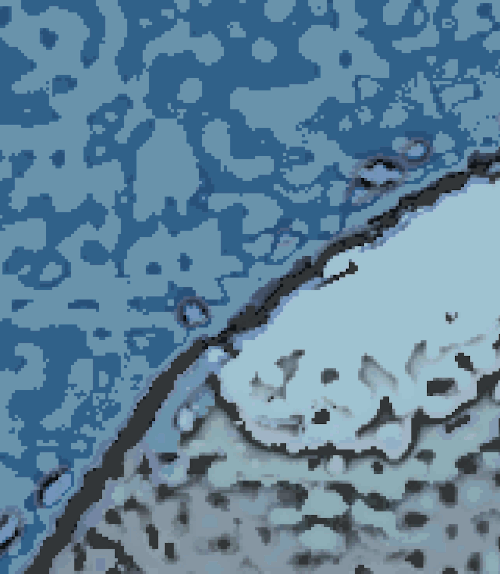
World view |
- Florence itself was a city-state which operated as
an independent political entity with its own government,
national defense, and in many cases, currency.
- It was originally a military camp and was
established by Julius Caesar and by the 13th-century,
transformed into a hub of creativity, intellect and
architectual splendor.
What is the city but the people? (Shakespeare) |
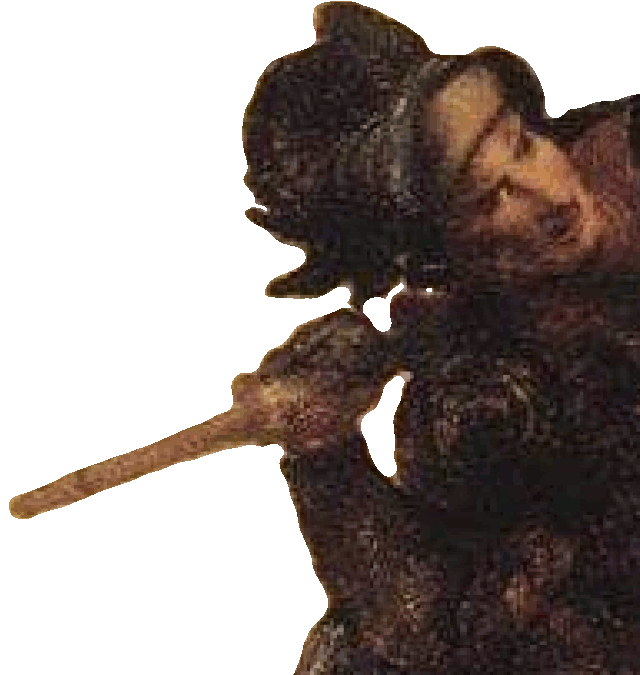
Fierce |
- Florentine troops, supported by the
Papal State and Venice, fought against the Milanese army which
had recently conquered San Sepolcro, a neighboring town, and
wanted to expand the possessions of Milan
in Tuscany.
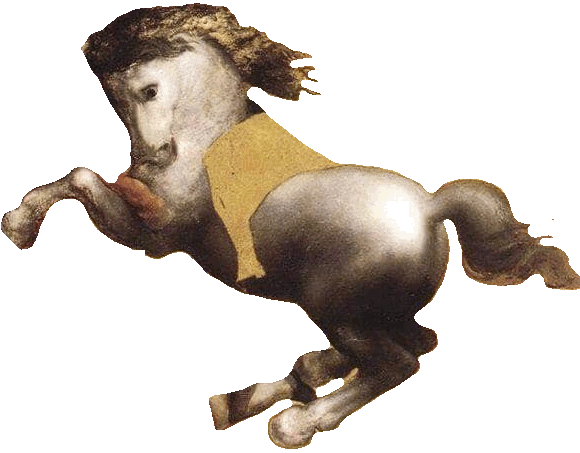
Yaldabaoth riding the horse |
-
On one side was the larger force of Duke Filippo Maria Visconti of Milan
(Duchy of Milan), and on the other the army of the Italian League, led by the Florentine Republic
which was unofficially headed by Cosimo the Elder.
Cosimo at
the time was perhaps the richest man in the world as
the leader of the internationally famous Medici
banking family. But this was still early in the Medici
family history and they were yet to become the
powerful political dynasty that history now records. (mykindofitaly.com) |
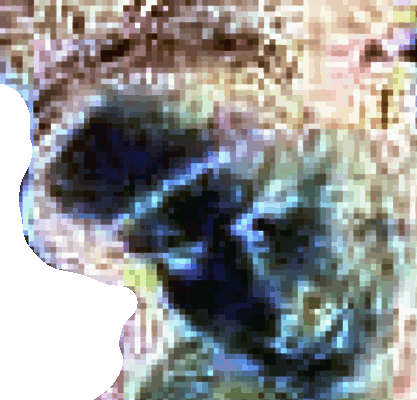
Defeated |
- The two armies led respectively by Michelotto Attendolo and Giampaolo Orsini and by the famous Niccolò Piccinino, faced each other in the valley below Anghiari, known today as the
'the valley of the battle.'
- The Army of Milan, led by Piccinino was outnumbered and was
quickly defeated.
- The Florentines' victory established their dominance over central Italy.
On the place where the battle was fought, an aedicule, called “Our Lady of Victory”, was erected and today the “Palio della Vittoria” is held every year to remember that day. (Mahima Sharma) |
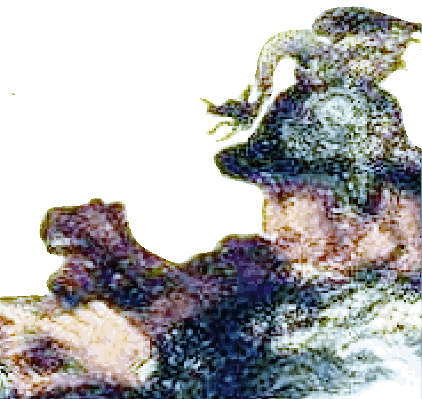
Horse bit |
- The result of this battle changed the balance of power
in Valtiberina and, as Niccolò Machiavelli pointed out, in
Tuscany and Italy for the years to come.
- The Duchy
(Duke) of Milan abandoned the area after his defeat and the Florentines were able to take advantage and fortify their dominion in the area.
For the battle, there was a description, which
says about the conflicted mix of fascination and
repulsion Leonardo, which portrays the brutality of
the battlefield. "If you show a man who has fallen to the ground, show the place where he has been dragged as blood mud. A horse will drag the body of its dead rider, leaving traces of the corpse’s blood in the dust and mud. Make the vanquished look pale and panic-stricken in grief, their faces stricken with painful lines." (Leonardo
da Vinci) |
|
Cosimo de' Medici the Elder |
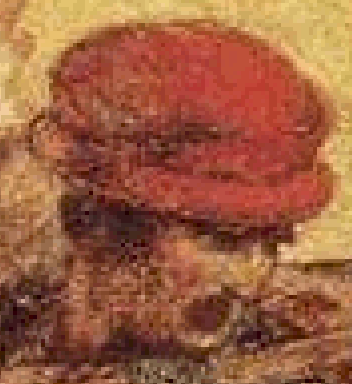
The Trillionaire Family That Owned Europe |
- The Medici family was so rich they
would make today's billionaires seem like they're living in
poverty.
- Cosimo di Giovanni de' Medici (1389-1464) was an Italian banker and politician who established the Medici family as effective rulers of Florence during much of the Italian Renaissance.
- His power derived from his wealth as a banker and intermarriage with other rich and powerful families.
The Medici family were a powerful family in Florence during the Renaissance. They were known for their ruthless ambition, which was sometimes achieved through bribery, violence, and corruption. (Wikipedia) |
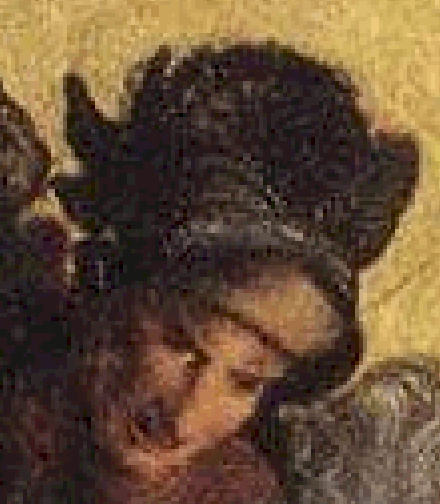
Godfathers of the Renaissance |
- The Medici didn't start out as the most powerful family in Italy,
other families were just as rich, and just as ambitious.
- But no one knew more about getting ahead and staying ahead.
- They clawed their way to the top, sometimes through bribery, corruption and violence
and those who stood in their way could end up humiliated, or dead.
- The Medici exploited a network of 'friends of friends' who would do anything to stay close to the family.
For the Medici, this network of amici degli amici - the magic words in Renaissance Italy - was the key to fame, fortune and survival. The power of the Medici stretched all the way to Rome, where even the papacy was something to be bought and sold. They were the Godfathers of the Renaissance. (pbs.org) |
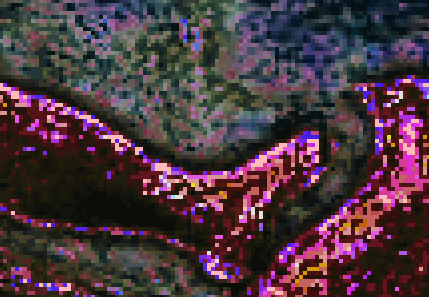
Nobility foot on gas |
- The Medici dynasty spanned beyond arts and finance,
venturing into the realm of politics and nobility.
-
Their dominance over several centuries were so absolute
they crafted new noble titles for themselves cementing
their status in history.
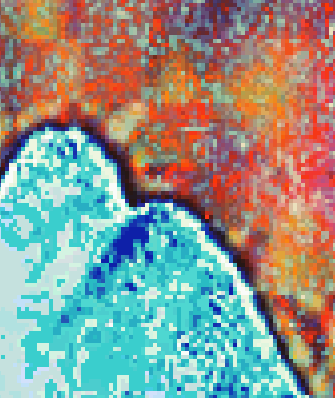
Subservient pontiff |
- When the family secured control over the papal
treasury, their influence rapidly became apparent to the
contemporary pontiff who remarked about the family's
patriarch Cosimo de' Medici with a mix of awe and
trepidation.
- As Florence was proud of its 'democracy,'
Cosimo pretended to have little political ambition and did not often hold public office.
-
However, the pontiff noticed that political
questions were settled in Cosimo's house.
Political questions are settled in [Cosimo's] house. The man he chooses holds office... He is who decides peace and war... He is king in all but name. (Pope Pius II) |
|
Charlemagne |
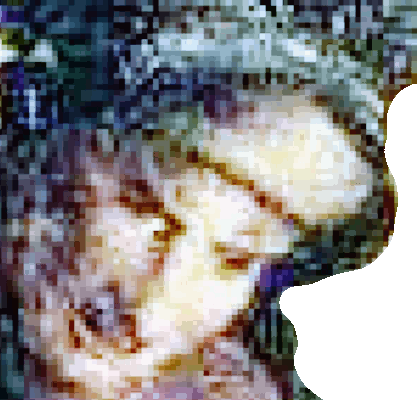
King of the Carolingian Renaissance |
- The Medici family eminence was rooted in a past shrouded in myth
and legend.
- It was said that their lineage could be
traced back to Charlemagne (748-814), also known as
Charles the Great, who reigned as the king of Franks from
768 AD, and the Lombards from 774 AD.
- Charlemagne
ruled later as an emperor of the Frankish Carolingian
Empire and his reign spanned from 800 to 814 AD and marked
a period of cultural and political resurgence.
- He was
responsible for helping to restore the Western Roman
Empire.
In 800, Charlemagne was crowned emperor in Rome by Pope Leo III. Although historians debate the coronation's significance, the title represented the height of his prestige and authority. (Wikipedia) |
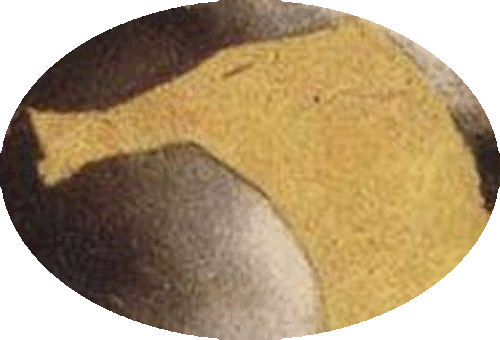
Yaldabaoth in charge |
- Charlemagne continued his father's policy of protecting the papacy and became its chief defender, removing the Lombards from power in northern Italy.
- His reign saw a period of expansion that led to the conquests of Bavaria, Saxony, and northern Spain, as well as other campaigns that
helped him to extend his rule over a large part of Europe.
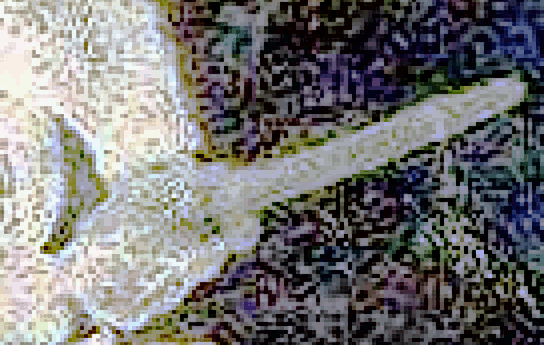
Wielding the papal sword |
- As king and emperor, Charlemagne engaged in a number of reforms in administration, law, education, military organization, and religion, which shaped Europe for centuries.
- Charlemagne, also known as 'Father of Europe,' spread Christianity to his new conquests,
although often by force.
Charlemagne died in 814 and was buried at Aachen Cathedral in Aachen, his imperial capital city. He was succeeded by his only surviving legitimate son, Louis the Pious. After Louis, the Frankish kingdom was divided and eventually coalesced into West and East Francia, which later became France and Germany. (Wikipedia) |
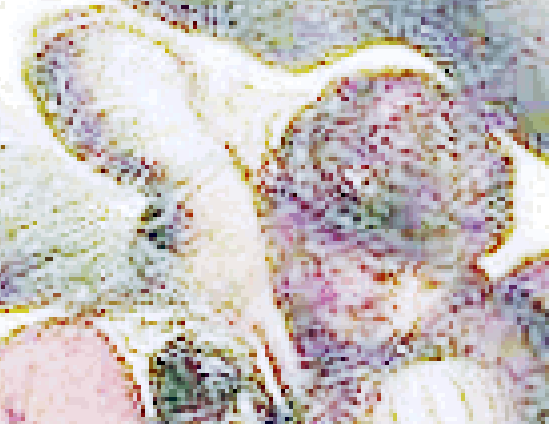
Averardo fought and killed the giant |
- Charlemagne has been the subject of artworks, monuments and literature during and after the medieval period and is venerated by the Catholic Church.
- The family’s roots supposedly are linked to one of Charlemagne’s
8th-century knights, named Averardo.
- As the story goes, Averardo was riding through an area north of Florence known
as the Mugello, when he encountered a giant who
had been frightening the local people.
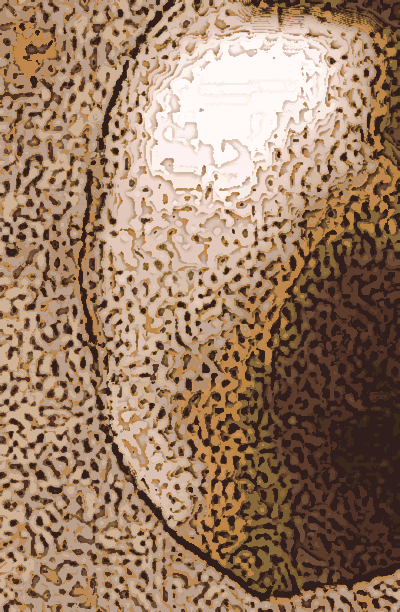
Alverado's dented shield |
- Averardo fought and killed the giant, and in the process, his shield was dented by the iron balls of his opponent’s mace.
- The Medici family coat of arms, which includes red balls on a gold shield, supposedly was inspired by Averardo and his battered shield.
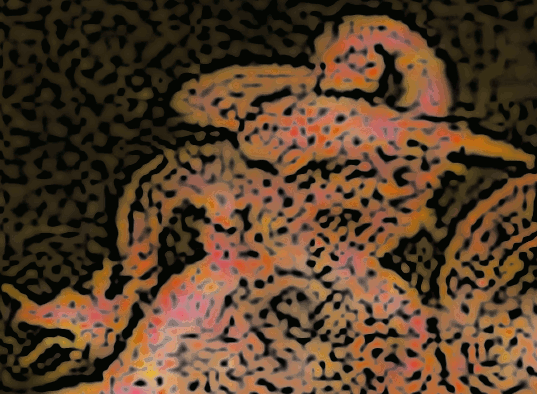
Red dragon |
- Today, the Medici coat of arms still can be seen on buildings throughout Florence that once were connected to the family.
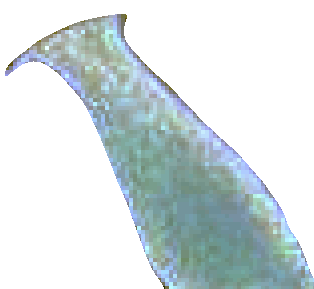
Glass guild |
- The Medicis political framework governed through a mix
of elected councils and influential guilds and the city
governance was a complex mix of democracy and oligarchy.
- Guilds were associations of artisans and
merchants that played a pivotal role in the city's economy and
politics.
- Members of these guilds were often wealthy and
influential, had the power to vote and hold office, thus hugely
impacted the governance and development of Florence.
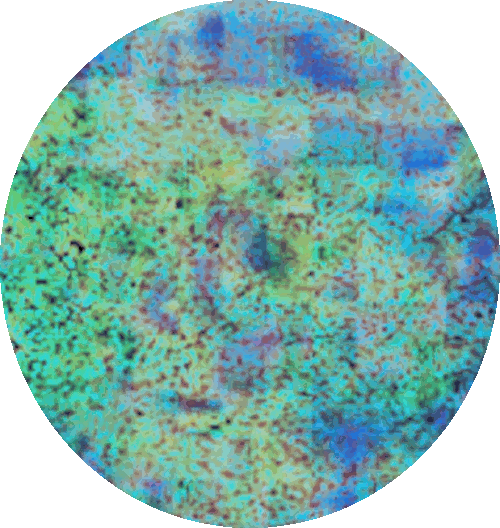
Fabric of Florentine society |
- The Medicis were the original creators of modern finance
and they wrote and sold the rule book of banking to the world.
- They leveraged their social connections and economic
success to gain influence within the guilds and councils and
over time were able to embed themselves deeply into the fabric
of Florentine society.
- Their ascent to power began in
1434 and endured until 1737.
|
Giovanni di Bicci de' Medici |
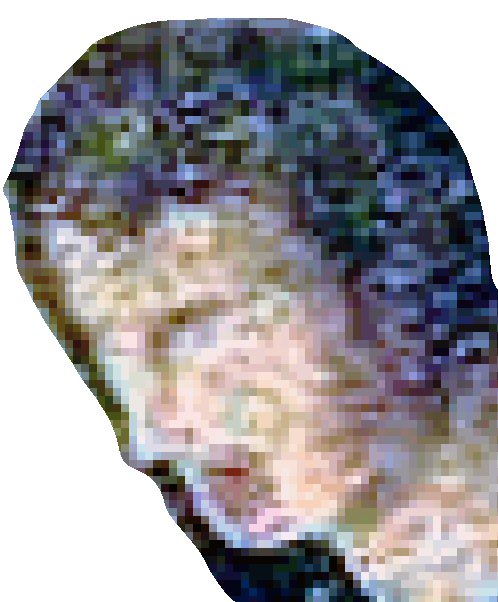
Ahead of his time |
- Cosimo was the first member of the Medici family to lead the Republic of Florence and run the Medici Bank simultaneously.
- His father, Giovanni di Bicci de' Medici (1360-1429),
formerly a wool merchant, established the bank before
Cosimo's birth following the dissolution of a small bank
begun by his nephew, Alverado de' Medici.
- By 1385,
Giovanni had ascended to the role of general manager of
the Rome branch which functioned effectively as a
partnership.
- The bank required less capital due to
its dealings with the Catholic Church, who predominently
made deposits.
- In 1391, Giovanni separated his bank
from Alverado and moved from Rome to Florence.
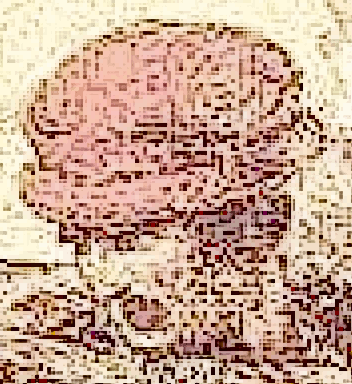
Franchesco |
- In 1397, Giovanni along with his brother Franchesco
de' Medici, established the Medici Bank in Florence
where the Medici fortune was built.
- The bank was
initially a part-time interest he ran alongside his wool
workshops, however, the future financial behemoth quickly
became his primary focus.
- His timing was opportune because his bank filled a void
left by earlier banking giants such as the Pazzi and Bardi
that had failed.
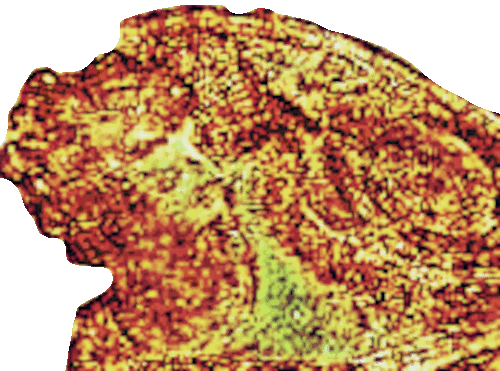
Everything turns to gold |
- Giovanni used 10,000 gold florin raised for the
venture, took on another partner, and this capital, along
with the papal deposits gave him a solid foundation.
-
By 1402, they established their 3rd bank branch in Venice
which pioneered the practice of compensating the general
manager through shares in the branch which he purchased
through his own investment.
- That same year, the bank
established woolen cloth factories reflecting their
diversification into manufacturing alongside financial
services.
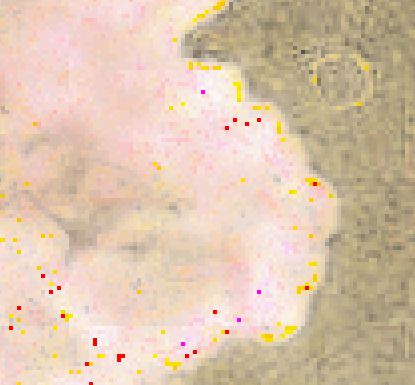
Silk and luxury goods touch them |
- With the advantage of Florence's growing economic
stature, bolstered by the conquest of Pisa and its
valuable port in 1406, the Medici Bank was positioned to
thrive.
- A shrewd businessman, Giovanni was able to
capitalize on the location of the city, which was
positioned in the center of the Silk Road (east to west)
trade route.
- This gave the 14th-century Italian
peninsula access to the rich markets of the Byzantine
Empire and the Islamic world, and also regions as far east
as India.
- Merchants passed through the region with goods such as silk, spices
and precious stones.

Roadmap is the stars |
- Additionally, Italy's extensive coastline and
well-developed maritime capabilities allowed for efficient
sea trade.
- Italian city-states like Venice and Genoa
became crucial maritime powers operating fleets that
dominated the Mediterranean trade routes.
- Italy's
position as a gateway to the rest of Europe, meant that it
was perfectly situated to distribute these goods from the
East to European markets.
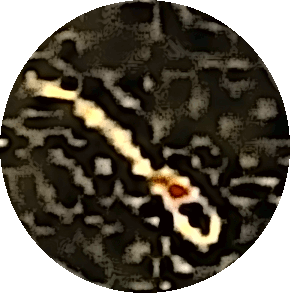
Needle's eye |
- The trade routes through Italy, not only included
maritime routes, but also a network of roads traversing
the Alps and leading into the heart of Europe.
- This
was very profitable for Italy because their cities became
vital centers for trade and banking and attractive to
merchants, bankers and entrepreneurs from all over the
continent.
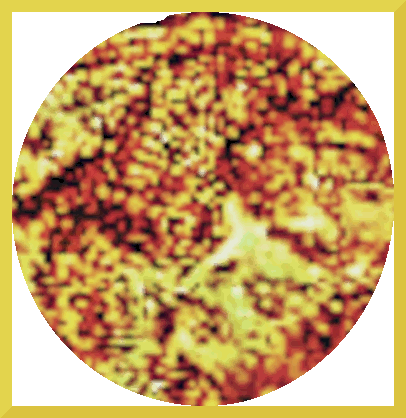
Gold florin |
- At the time, Florence emerged as an important center for banking
and the city’s gold coin, the florin, was a popular currency across Europe in the 14th-century.
- Giovanni was not only father to Cosimo, but also to
Lorenzo the Elder.
While other members of the Medici family, such as Chiarissimo di Giambuono de' Medici, who served in the Signoria of Florence in 1401, and Salvestro de' Medici, who was implicated in the Ciompi Revolt of 1378, are of historical interest, it was Giovanni's founding of the family bank that truly initiated the family's rise to power in Florence. (Wikipedia) |
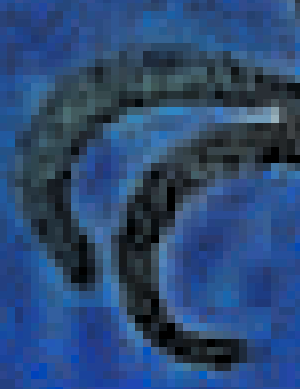
Blueprint |
- The Medicis
were not only ahead of their time, they were a blueprint for
centuries of economic advancement.
- Additionally,
Giovanni aligned with Pope Martin V which was a strategic move
that propelled the bank's success forward.
- In 1414, he
received an appointment to manage the apostolic chamber of the
papal treasury, which was a testament to this strategic
alignment.

Sun in Rome |
- At the time, Pope Martin V desired to reestablish the
papacy permanently in Rome due to a schism that had
multiple claimants to the papacy emerging and caused
significant religious and political strife.
- The return
of the papacy to Rome symbolized a return to traditional
religious 'authority' and stability.
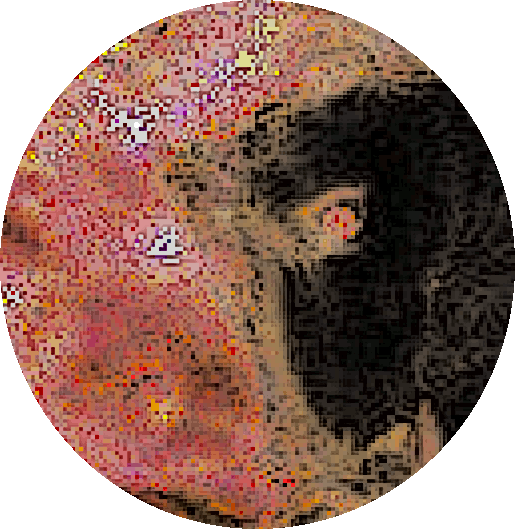
Ecclesiastical and secular power |
- By supporting the Pope in his endeavor, Giovanni
positioned himself and his bank favorably within the realms of
ecclesiastical and secular power.
- This also gave the
Medici bank access to vast financial networks and significant
transactions throughout Europe and marked the beginning of the
family's long-standing relationship with the papacy.
- They
were able to gain leverage over important political and
ecclesiastical figures as their role as bankers to the
Vatican placed them in a role of indispensable financial
authority.
- This also allowed them to secure key
political positions for family members including 4 papal
seats, which fortified their political standing.
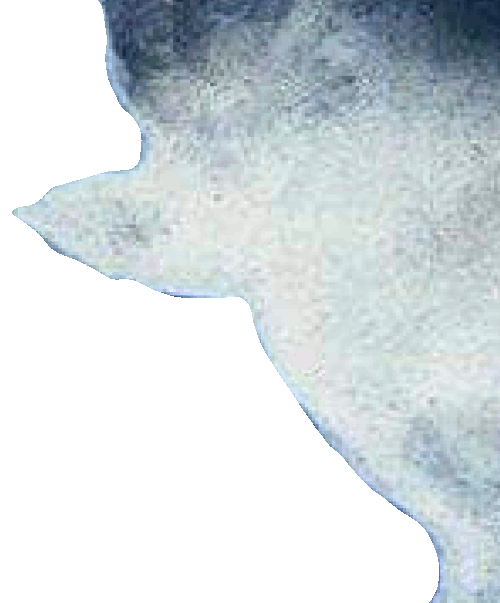
Office of cardinal |
- Giovanni's eldest son, Cosimo the Elder had quite a reputation and long before, in 1410,
he lent Pope John XXIII, then simply known as Baldassare Cossa, the money to buy himself the office of cardinal.
- Cossa repaid him by by appointing the Medici Bank head of all papal finances once he claimed the papacy.
- Cosimo was a strong patron of the arts, learning and
architecture, where his family had great influence.
As one of the wealthiest men in Europe, the elder Cosimo spent a very large portion of his fortune on government and philanthropy, for example as a patron of the arts and financier of public works (Wikipedia) |
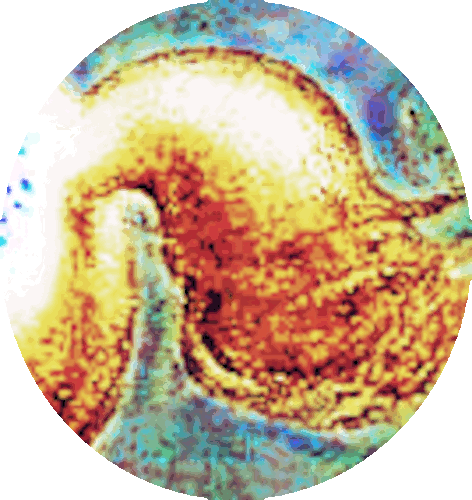
Anti trumpet |
- In 1415, Cosimo allegedly accompanied the Antipope John XXIII at the Council of Constance.
- Cosimo was initiated into affairs of high finance in the corridors of the Council of Constance, where he represented the Medici
Bank.
- That same year, he was named the priore of the Republic
of Florence, giving him even more power as one of 9
Signoria who governed the city-state.
The Council of Constance was an ecumenical council of the Catholic Church that was held from 1414 to 1418 in the Bishopric of Constance (Konstanz) in present-day Germany. This was the first time that an ecumenical council was convened in the Holy Roman Empire. The council ended the Western Schism by deposing or accepting the resignation of the remaining papal claimants and by electing Pope Martin V. It was the last papal election to take place outside of Italy. (Wikipedia) |
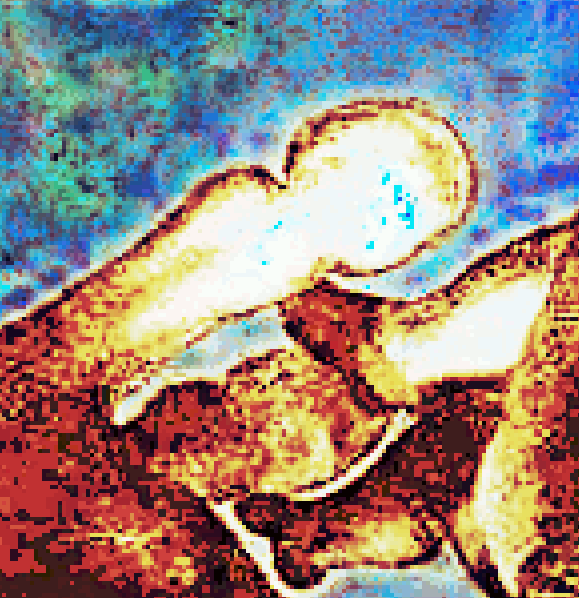
Head of all finances |
- The Medici banking empire was the most powerful in
Europe and spanned across pivotal cities such as Milan,
Venice, Naples, Rome, London, Geneva and Barcalona, among many others, all
powerful city-states.
- Their influence was not only
in the banking, financial and political sectors, but they
also had significant control over the papal treasury
intertwining their influence with the Catholic Church.
Ferdinando I de’Medici, son of the infamous Cosimo I of Florence, was a cardinal and eventually the Grand Duke of Tuscany. He was a ruthless and perhaps a cruel man even by the standards of the day. But at heart, he was an artist. This manifested itself in his collecting. (christopherjamespoet.wordpress.com) |
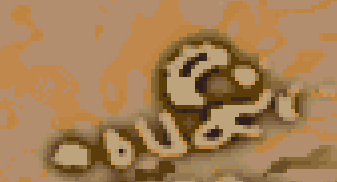
Busy bee |
- Cosimo's involvment in the family business greatly
expanded his father's legacy, and would eventually eclipse
it by leaps and bounds.
- Especially because he spent
over 400,000 ducats building churches, monasteries and
other elegant edifices not only in Italy, but in other
parts of the world.
- Apparently he spent more money
immortalizing his name, than he did providing for his
descendants during that time.
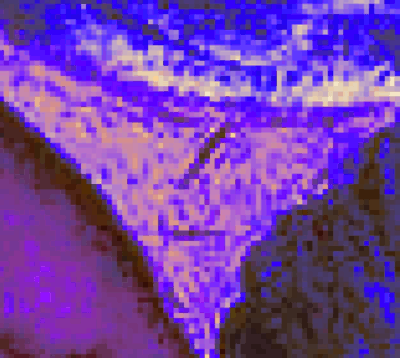
Medici tornado |
- The papal treasury was crucial for funding church operations
and projects like cathedral construction, art
commissions and maintenance of clerical roles.
- This
union awarded the Medicis control beyond mere commerce and
banking by leveraging the churches' vast societal
influence.
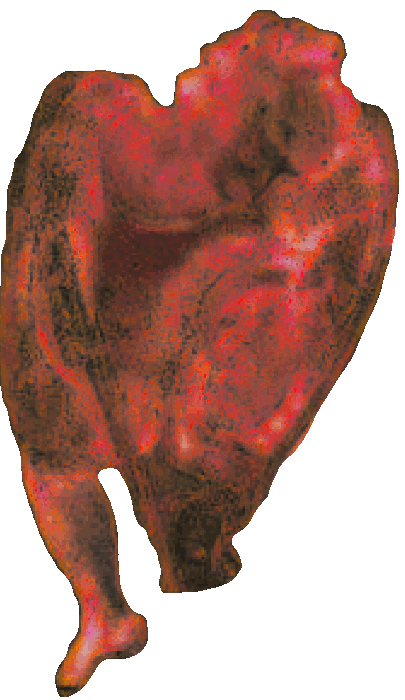
Hearty |
- About 1415, Cosimo married Contessina de' Bardi
(1390-1473) who was the daughter of the count of Vernio and it
brought noble ties to the common family of the Medici.
-
Prior to the Medici's domination of the banking world, the
Bardi clan had run one of the richest banks in Europe,
however, it ultimately failed in 1345.
- The Bardi's were still
very influential and powerful and the marriage was intended to
cement an alliance between two of Italy's most powerful
families.
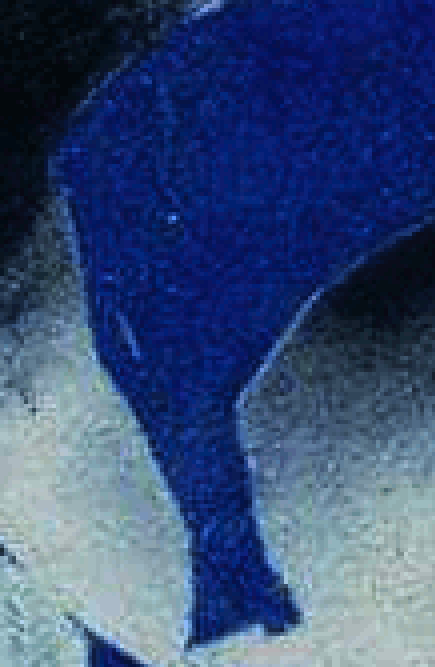
Behemoth called financial services |
- The increase in trade in Europe was at the time
accompanied by an increasing need for sophisticated financial
services.
- These included; currency exchange, credit
facilities and the ability to handle large transactions,
especially for the affluent and the governing classes.
- By the mid-1420s, the Medici bank had solidified its
financial base largely due to the profitability of its Italian
branches.
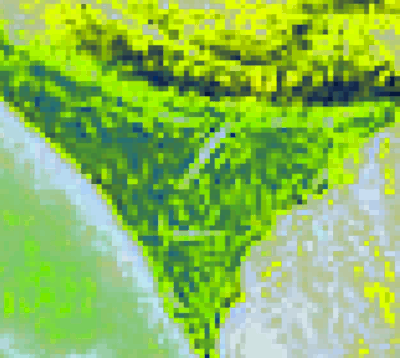
Letter of credit storm |
- In terms of financial innovation, the Medici were
trailblazers and were the first to introduce the 'letter of
credit' which were precursors to modern day checks and
provided the guarantee that a seller would receive payment
backed by the bank.
- They also introduced 'bills of
exchange' which facilitated trade across different currencies
and regions.
- This revolutioned commerce and
proved to be an instrument of banking convenience because it
allowed merchants to travel without the need to carry cash,
greatly reducing the risk of theft.
- The Medici also
developed the double-entry bookkeeping system of credits and
debits.
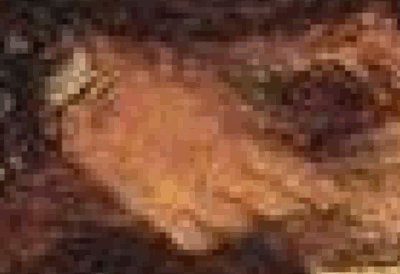
Holding company
|
- At the same time, the Medici bankers were pioneering the
'holding company' concept.
- This was a business strategy
where an apparent entity owned shares in various companies
which provided them control over diverse operations without
direct involvement in day-to-day affairs.
- This strategic
foresight not only consolidated the Medici power and wealth,
but also laid the foundation for the corporate governance
structures that are now commonplace today.
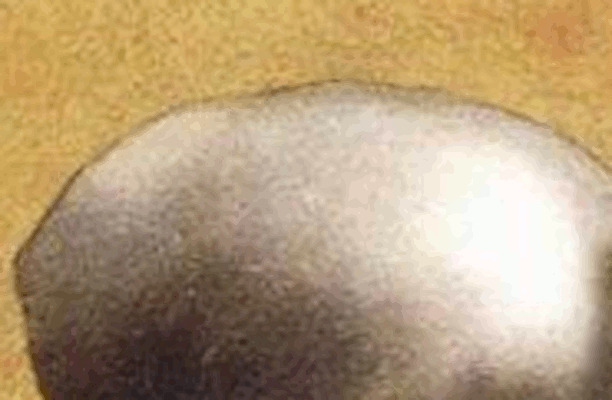
Golden nest egg |
- When Giovanni died in 1429, he was the
second wealthiest in Florence having an equivalent to $36
million, which was a staggering amount in those days, and
today would be the equivalent to about $1.8 trillion dollars
(and growing).
- Upon his death Giovanni became
a favorite among the Florentine public who felt he
positioned them for great success.
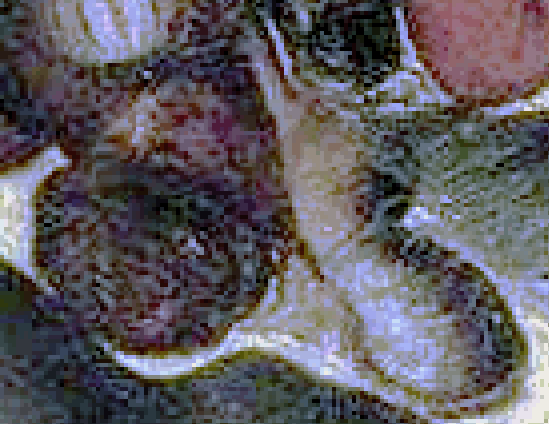
Seismic shifts |
- But the family
weath didn't end there and it is said that their net worth
is pegged at around $29 billion US dollars which inflated
amounts to an incomprehensible $6.5 quadrillion dollars in
today's terms.
- This is a figure that is larger than the entire GDP
(gross domestic product) of the world, although it's
important to take these calculations knowing they involve
complex economic and historical shifts over a period of
six centuries.
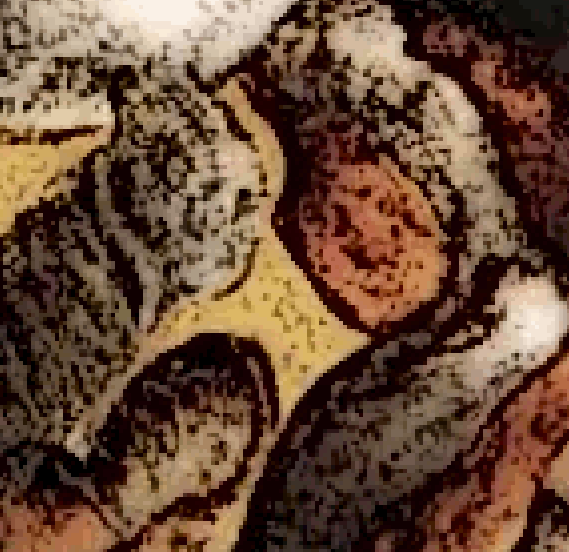
Father and sons |
- Cosimo had two legitimate sons; Piero
di Cosimo de' Medici (1389-1464) commonly known as Piero the
Gouty, and Giovanni di Cosimo de' Medici (1421-1463).
- He also had an illegitimate son, Carlo, by a Circassian slave, who would go on to become a prelate.
- By
the 1430s they were the most powerful in Florence which posed
a threat to other influential families such as the Strozzi and
Albizzi.
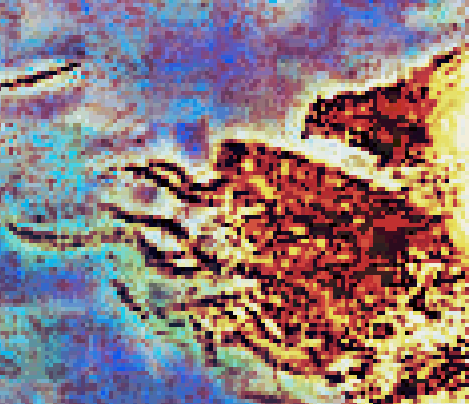
Exiled |
- Cosimo was imprisoned in 1433
after a failed bid to conquer the nearby Republic of Lucca,
however, he was able to negotiate a reduction in his sentence
from imprisonment to a sentence of exile from the city.
-
This was despite many calling for his continual imprisonment
and some for his execution.
Despite his influence, his power was not absolute; he was viewed by fellow Florentine politicians as first among equals rather than an autocrat. Florence's legislative councils resisted his proposals throughout his political career, even sending him into exile from 1433 to 1434. (Wikipedia) |
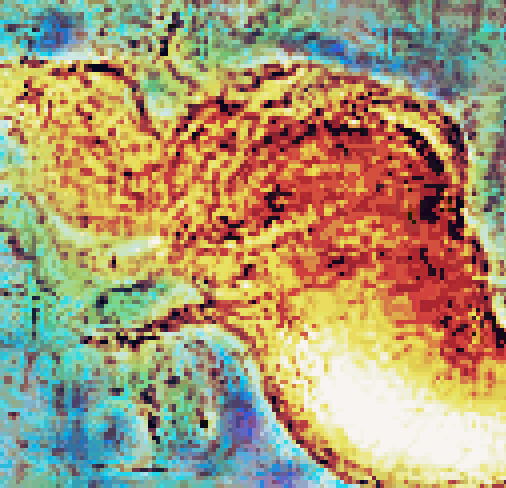
Horse's tail |
- Despite all, Cosimo narrowly avoided execution in 1433 and his return from exile after barely 12 months
in 1434, propelled him into an unassailable position of power in Florence where he became king in all but name.
- Cosimo's power over Florence stemmed from his wealth, which he used to control the votes of office holders in the municipal councils, most importantly the Signoria of Florence.
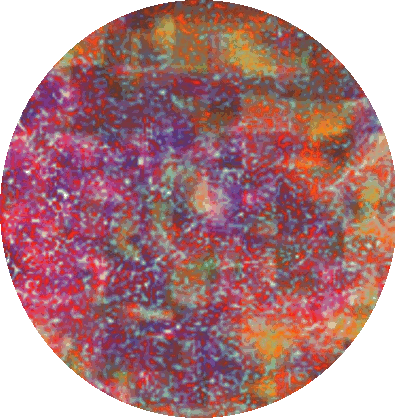
Bloody intra-city power struggles |
- Soon after, he moved his banking business to Padua and
then to Venice with his brother Lorenzo de' Medici.
- Many
praised him for accepting exile and giving up the
tradition of bloody intra-city power struggles.
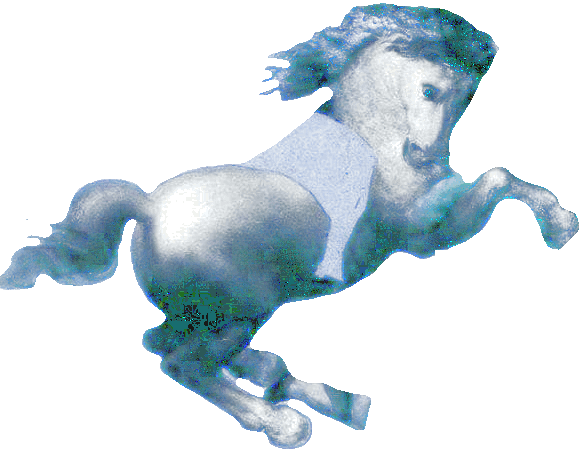
Factional rivalry |
- In no time, so many citizens followed him away from
Florence, the city leaders had to lift his exile sentence
in order to stop the exodus.
- Upon returning to the
city, he began working on quashing the factional rivalry
that had led to his banishment and had plagued Florence
for years.
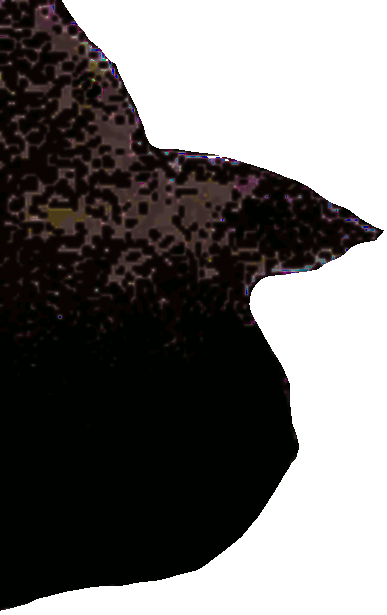
Medici hovers |
- Exactly one year later, a sudden and unexpected move by the Medici, in which they
rigged elections, handed them once again the Signoria (council of government).
- When Cosimo triumphantly reentered the city, his enemies went into exile, never to return
and the Medici principate began in 1434.
Cosimo traditionally has been accused of destroying Florentine liberties; but these ancient liberties, more of an illusion than a reality, had already ceased to exist in the Florence of the Albizzi. Cosimo only had to perpetuate the formula of those he was evicting, in other words, to maintain the appearance of a constitutional regime. (britannica.com) |
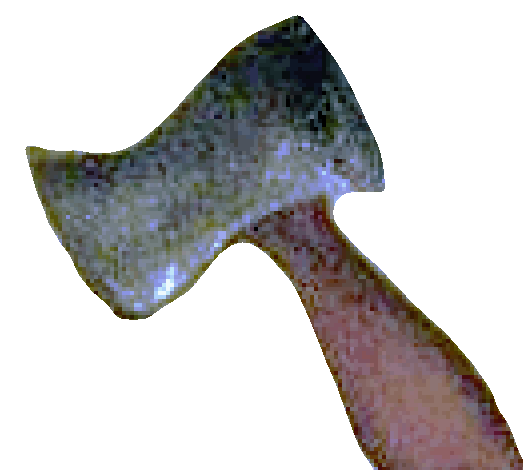
Quasi-monarchical authority |
- Florence's governance structure, known as the
Citizen Signoria (council of government), was administered
by a group of 9 citizens who were chosen bi-monthly by
the city's guilds.
- This arrangement facilitated
Cosimo's substantial influence enabling him to preside
over the city with a quasi-monarchical authority, despite
its Republican framework.
- He became the duke of
Ferrara and served as a banker to Venice.
Quasi-monarchical is a term that describes a system of government that has some aspects of a monarchy, but with some key differences. For example, a quasi-monarchical system might have a monarch who has some political influence, but is not the sole ruler. (Wikipedia) |

Spirit of the law |
- Cosimo felt he was perfecting the
election system.
- First, he made no changes in the law’s actual administration, but in the spirit of the law he changed everything.
- Previously, it was the rule to fill high official positions by drawing lots
and he manipulated the process so that only the names of men who could be depended upon
by the Medici's were drawn.
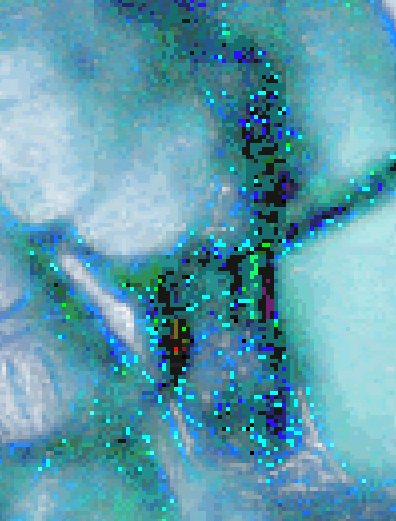
Mythological figures |
- Cosimo also worked on a subtle, but
effective approach to consolidating power; instead of relying
on brute force, he favored the arts as a means of reaffirming
the Medicis dominance.
- He was able to accomplish this by
commissioning some of his stable of artists to portray him
as mythological figures like Orpheus.
- This practice of
glorification through art would become a hallmark of the
Medici dynasty, extending to future generations.
Orpheus, in Greek mythology, legendary hero endowed with superhuman musical skills. He became the patron of a religious movement based on sacred writings said to be his own. (britannica.com) |
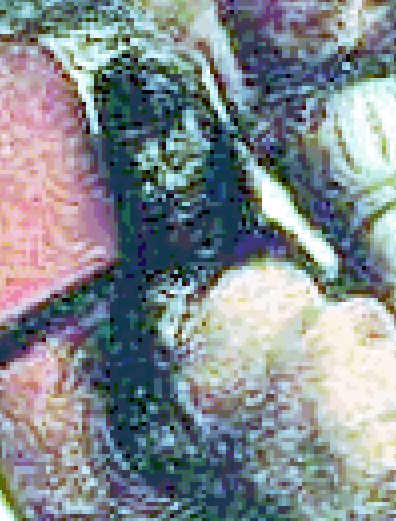
Greek and Islamic sources |
- In 1444, Cosimo founded the Laurentian Library, which
was the first public library in Florence, at San Marco.
- The library was of central importance to the humanist movement in Florence during the Renaissance
and was designed by Michelangelo.
-
Cosimo employed a book scout, who
was tasked with acquiring manuscripts from Greek and
Islamic sources.
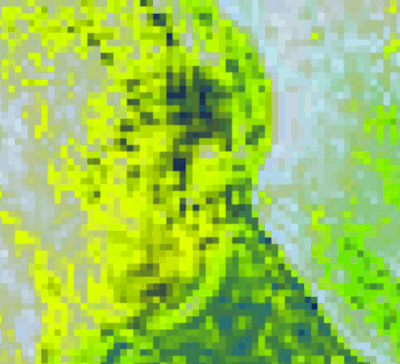
Personal wealth |
- Cosimo is also said to have pioneered
the practice of channeling personal wealth into public
projects, particularity in the realm of architecture and
urban development.
- This was a significant change because until that time,
private wealth was often hoarded or spent on personal
luxuries and was a concept that profoundly shaped the
cultural and architectual landscape of Florence.
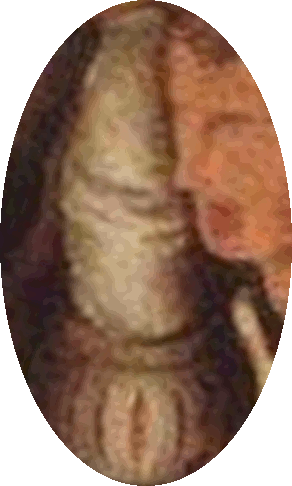
Architectual landscape |
- One of Cosimo's most notable achievements was
overseeing the completion of the dome of the Florence
cathedral which was a marvel of modern engineering
architected by
Filippo Brunelleschi (1377-1446).
- Cosimo felt that
such undertakings were the only true path to immortalizing
his family's name and one of his biggest regrets was he
didn't start spending his wealth on projects 10 years
earlier.
- He worried that 50 years in the future, no
one would remember his name save what he built for
himself.
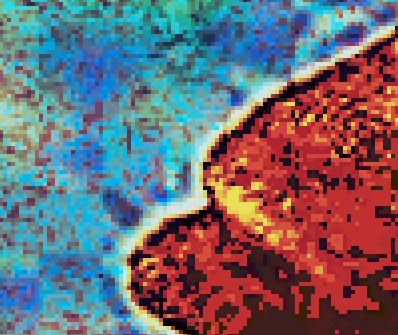
Gold fish |
- Cosimo obtained from Pope Pius II the Tolfa alum mines monopoly
during a period where alum was indispensable to Florence’s textile industry.
- He was the wealthiest man of his time, not only in terms of bullion but also in the amount of bank and promissory notes payable to his bank in Florence and to its branches operating in all the important financial markets of Europe.
- Cosimo went on from there to eventually manage the papacy’s finances and in 1462 filled his coffers to overflowing.
- These connections were crucial in expanding the Medici
political reach far beyond Florence embedding them deeply
within the political landscape of Renaissance Europe where
they provided banking services to all the royal courts.
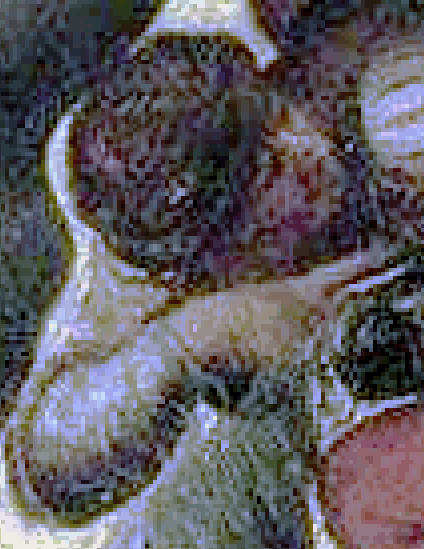
Religious scrutiny
|
- Despite their close ties with the papacy, the Medicis
were not exempt from religious scrutiny, particularly
regarding the alleged sin of usury, the practice of
charging excessive interest on loans.
- The family
navigated these accusations with strategic financial
maneuvers by coming up with several different ways of
avoiding the church's definition of usery, while still
making a profit.
- One way they accomplished this was
by making loans to trading partners in return for access
to below the market rate prices.
- For example, they
would lend to English wool merchants in return for the
ability to purchase wool cheaper than their trading
competitors.
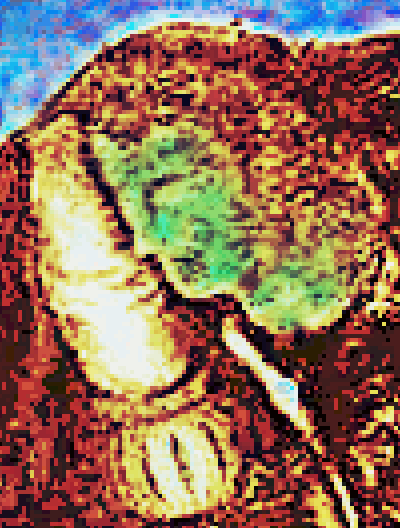
Gouty |
- Son Piero the Gouty received his
nickname because he was inflicted with gout and was in poor
health his entire life.
- For this reason, he didn't play
an extensive role in the politics of Florence, however, he
would hold political meetings in his bedroom where he was
confined to bed.
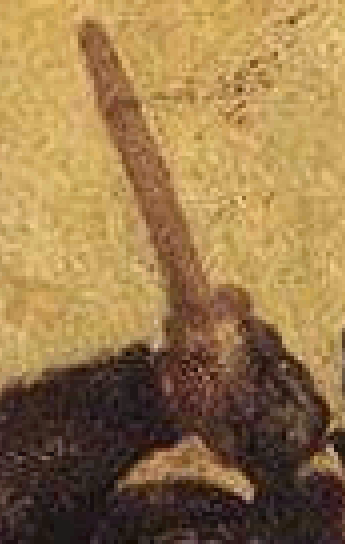
Coup |
- During Piero's short time as leader of
Florence there was an attempted coup which eventually failed.
- Although he was not as brilliant a banker as his father, he
was able to keep the family bank running smoothly during his
tenure.
He als continued the family's tradition of
artistic patronage, including Gozzoli's fresco
'Procession of the Magi' in the Palazzo Medici
Riccardi.(Panagiotis Constantinou) |
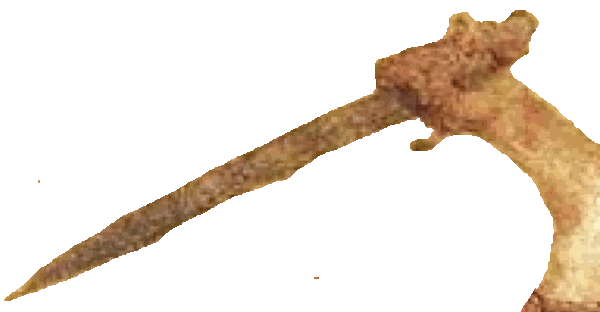
Ferrara forge or iron workings |
- Son Giovanni di Cosimo de' Medici
enjoyed good health and was seen as his father's probable
successor.
- From 1438 he directed the branch of the family
bank in Ferrara.
- He was a famous patron of arts and
artists who worked for him included Mino da Fiesole, Desiderio
da Settignano, Donatello, Domenico Veneziano, Filippo Lippi
and Pesellino.
- Giovanni died in 1463 before his father
and brother.
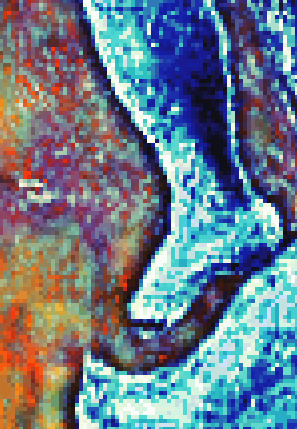
Piero was successor |
- Cosimo died in Careggi in 1464 and
was succeeded by his son Piero, who was father of Lorenzo the
Magnificent.
- Following Cosimo’s death in 1464, the bank went into decline and by the end of the 15th-century had shuttered most of its branches.
- After his death, the Signoria
posthumously awarded him
the title Pater Patriae which means 'Father of the
Fatherland (country).'
- This was an honor previously awarded to
the poet Cicero.
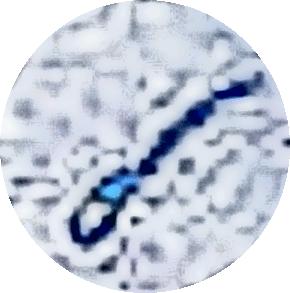
Family line |
- Son Piero, took the leadership role
for 3 years, but died in 1469 due to lung disease.
-
However, it was Piero's son, Lorenzo the Magnificent who would
perhaps outdo all Medici family members before and after him
in power and cultural prominence.
|
Lorenzo the Magnificent |
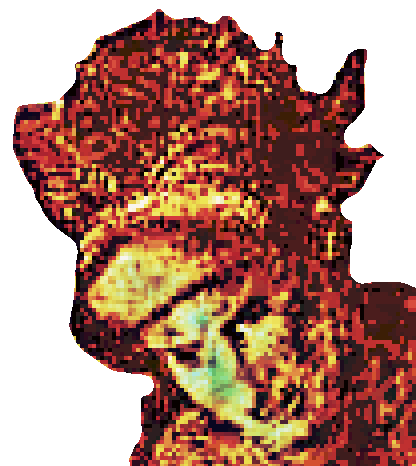
Most powerful patron of Renaissance culture |
- Lorenzo di Piero de' Medici (1449-1492) was the first son of Piero the Gouty and Lucrezia Tornabuoni.
- He was known as Lorenzo the Magnificent and was a
successful Italian statesman and the de facto ruler of the Florentine Republic.
- Lorenzo was the most powerful patron of Renaissance culture in Italy,
his diplomatic prowess brought unprecedented prosperity and
renown to the family.
- His image was marked by a more
flamboyant and grandiose approach to life.
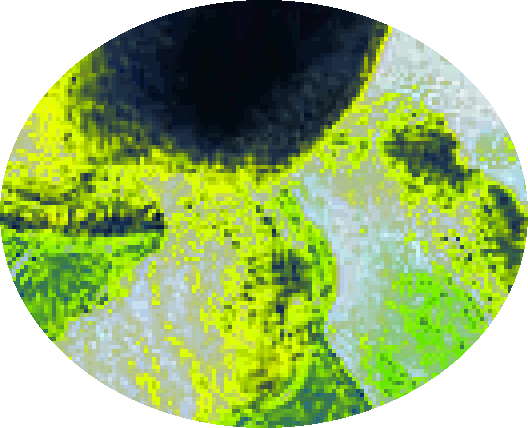
Enlightened |
- Lorenzo received an
education that was comprehensive and he was well-versed in
literature and the arts, as well as politics and economics.
- He studied under masters such as Marsilio Ficino, a key figure in the revival of
Neoplatonism who influenced Lorenzo's philosophical and
cultural outlook.
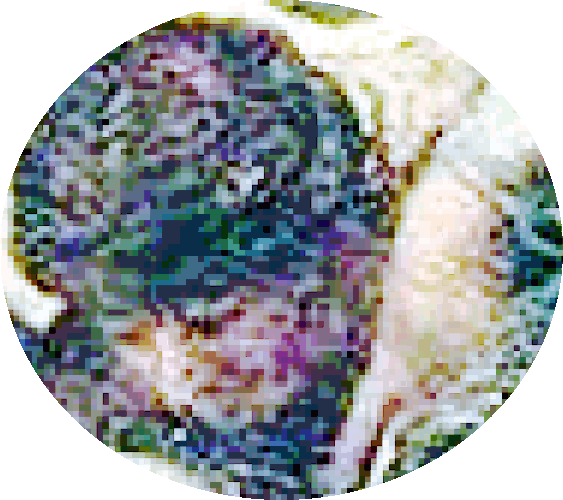
Conflict resolution |
- Lorenzo's father sent him on many important diplomatic missions when he was still a youth, including trips to Rome to meet the pope and other important religious and political figures.
- At age 17, in 1466, he was instrumental in resolving a
dispute between the city's leading families, showing his
talents in negotiation and conflict resolution.

Grandiose and flamboyant |
- His father died in 1469 when he was 20 and Lorenzo
assumed the leadership of the Medici family and began to shift
the family's approach to their public image and influence.
- At the same time, they maintained the family's traditional
role in banking and commerce.
- Lorenzo was known for his lavish lifestyle and his
magnificent celebrations and festivals which reinforced the
family status as cultural leaders.
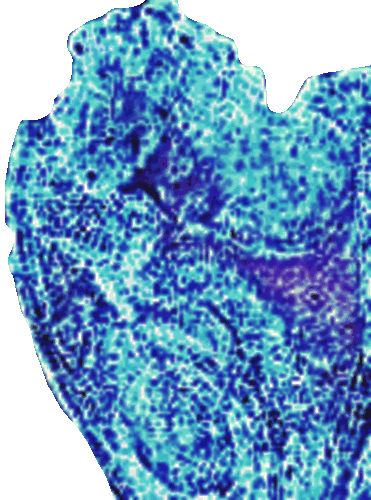
Sculpture garden statue |
- The Medici palace was the epicenter of Renaissance art
and intellectualism and it was the location of a 'sculpture
garden' which housed an impressive collection of classical
statues.
- It was the workshop in this garden that
influenced Michelangelo's early development as a sculptor.
- Lorenzo was also a writer and poet and his fascination
with splendor and beauty is evident.
And above all (love is) the cause that leads men
to worthy and excellent endeavors and leads them to
practice and to turn into action those virtues that
are potentially in our soul. Therefore, whoever
diligently seeks the true definition of love finds it
to be nothing other than an appetite for beauty.
(Lorenzo di Piero de' Medici) |
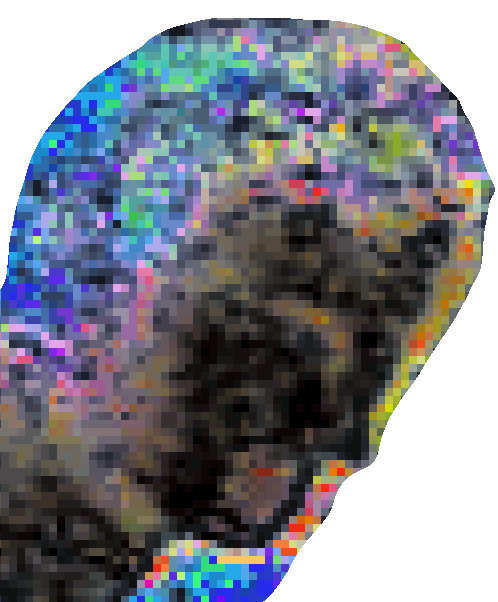
Patron of the arts |
- As a patron of the arts, Lorenzo's court included artists such as Piero and Antonio del Pollaiuolo, Andrea del Verrocchio, Leonardo da Vinci, Sandro Botticelli, Domenico Ghirlandaio and Michelangelo Buonarroti, who were instrumental in achieving the 15th-century Renaissance.
- Botticelli,
who was known for his expressive portrayal of mythological
figures and religious themes, used the Medici family as models in several
paintings such as, The Adoration of the Magi which included several generations of the family.
- The painting shows representations of the Medici family as the Magi and members of their court, as well as a self-portrait of Botticelli.
Michelangelo stayed at the Medici palace for four years before going on to eventually create such Renaissance masterpieces as the “Pieta” and “David” sculptures and Sistine Chapel ceiling paintings. Sandro Botticelli was another artist who lived at the Medici palace as a young man and benefitted from the family’s patronage throughout his career. Historians have suggested a young Leonardo da Vinci might have resided with the Medicis for some time as well.
(history.com) |
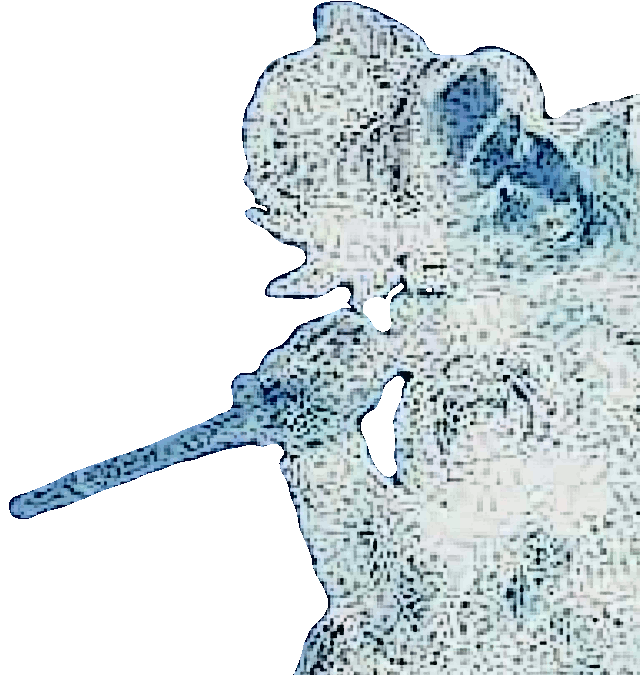
Pazzi conspiracy |
- Lorenzo created a plan to stem the territorial ambitions of Pope Sixtus IV, in the name of the balance of the Italic League of 1454.
- For this, Lorenzo was the subject of the Pazzi conspiracy in 1478
which was a failed plot by members of the Pazzi family and others to displace the Medici family as rulers of Renaissance Florence.
Lorenzo held the balance of power within the Italic League, an alliance of states that stabilized political conditions on the Italian Peninsula for decades, and his life coincided with the mature phase of the Italian Renaissance and the golden age of Florence. (Wikipedia) |
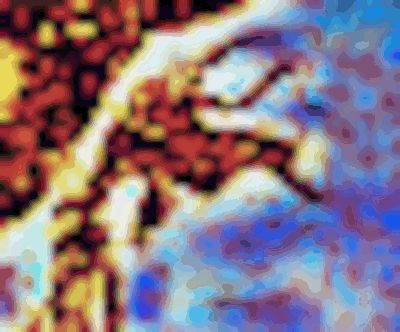
Giuliano was assassinated |
- Giuliano de’ Medici (1453-1478) was the second
son of Cosimo, he was murdered in 1478 after he and his brother Lorenzo were targets of an assassination plot.
- Members of the Pazzi family attacked the brothers in the Duomo Cathedral of Florence during High Mass on Easter.
-
Giuliano was nursing a bad knee and had to be helped to the cathedral by the very men who were plotting to kill him and his brother during mass.
- Lorenzo escaped with wounds, but Giuliano was
brutally stabbed by
Bernardo Bandini dei Baroncelli and Francesco de' Pazzi.
In the aftermath of the plot many of the conspirators – and others accused of being conspirators – were executed, some by hanging from the windows of the Palazzo della Signoria; there were some eighty executions in all. The surviving Pazzi family members were banished from Florence. (Wikipedia) |
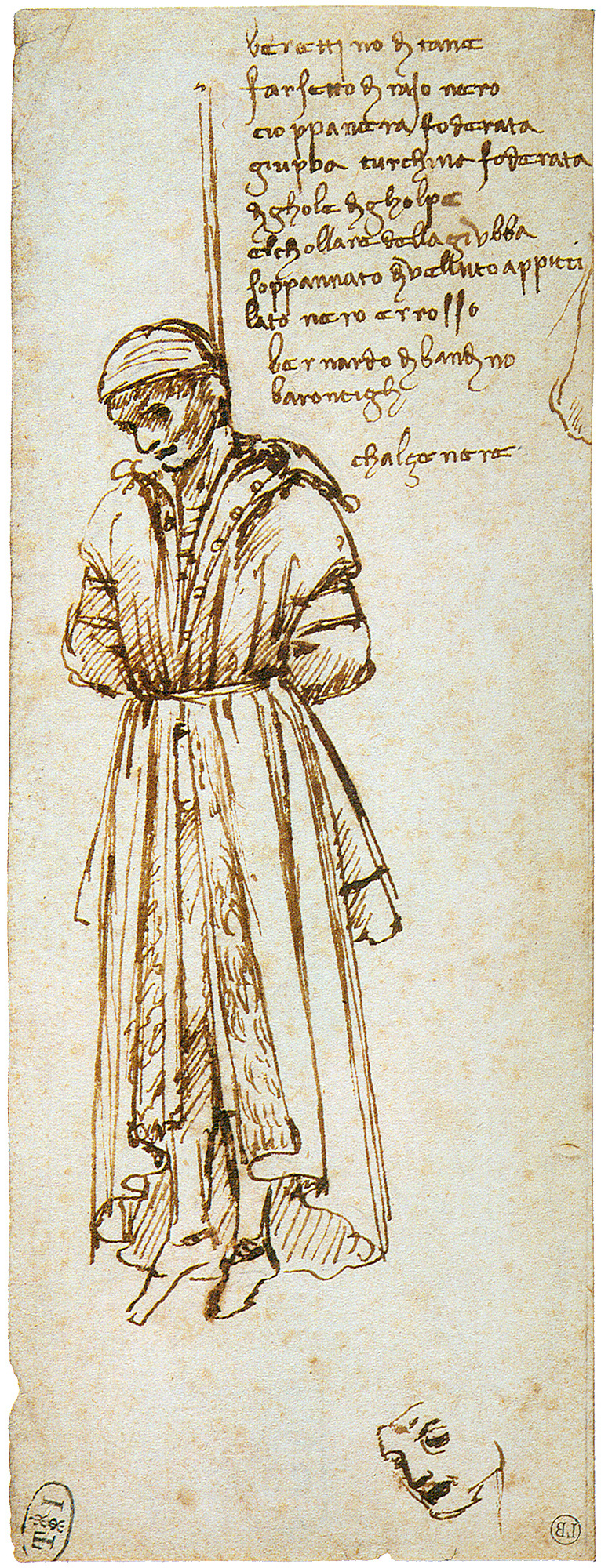
Leonardo da Vinci, Public domain, via Wikimedia Commons
1479 |
-
The Florentines did not rise against the Medici as the Pazzi had hoped they would
- DaVinci created a drawing of hanged Pazzi conspirator Bernardo Bandini dei Baroncelli
in 1479.
- He was hung from the windows of the Palazzo
della Signorida along with 80 others.
The Pazzi were banished from Florence, and their lands and property confiscated. Their name and their coat of arms were perpetually suppressed: the name was erased from public registers, and all buildings and streets carrying it were renamed; their shield with its dolphins was everywhere obliterated. (Wikipedia) |

Lorenzo was excommunicated |
- Sixtus IV reacted strongly to the death of Salviati: on June
1, 1478, he excommunicated Lorenzo, his supporters and all members of the current and preceding administration of the city.
- Lorenzo, like his grandfather, father, and son, ruled Florence indirectly through surrogates in the city councils by means of payoffs and strategic marriages until 1490.
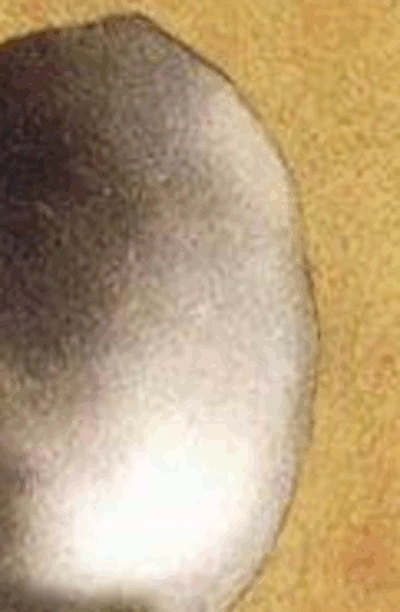
Golden egg |
- Under Lorenzo's leadership, the Medici family's
financial influence reached new heights with the gold florin
of the Medici bank becoming standard currency throughout Italy
and parts of Europe.
- However, this period of extravagent
abundance led to many loans they issued were never recovered
and this unsustainable spending eventually led to the
depletion of the bank's reserves.
- By 1470, Lorenzo had
documented the bank's mismanagement noting debts owed by
Charles the Bold alone far exceeded the lending limits set in
the partnership articles.
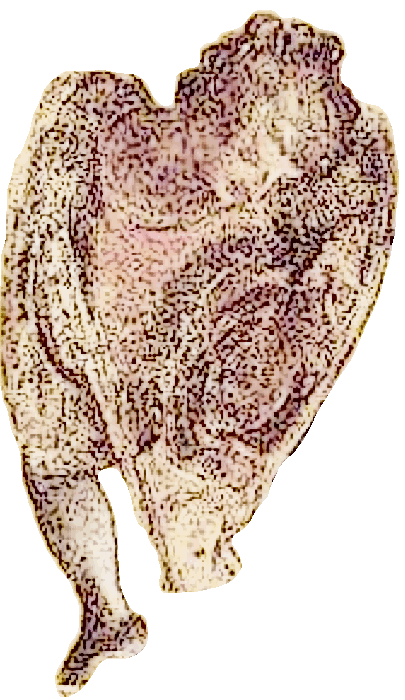
Patronage of the arts |
- Consequently, in 1494,
just 2 years after Lorenzo's death, the Medici lost control of
the papal treasury to the Pazzi family, their longtime rivals
who has previously attempted to assassinate him.
- The
bank's demise caused a significant shift in the economic and
political landscape of Florence.
- Its impact extended far
beyond its operational years and for Florence, its departure
impacted financial stability and resulted in a reduction in
patronage of the arts.
- Reduced funding for artistic and
architectual endeavors slowing the cultural flourishing that
had characterized the city during the height of the Medici
power.
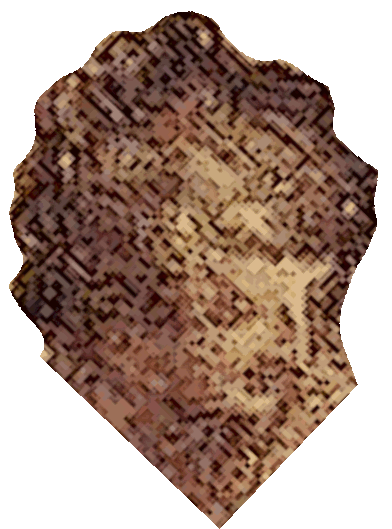
Florence’s reformist leader |
- In the 15th-century, fundamentalist preacher Girolamo Savonarola criticized what he viewed as the Medicis’ tyranny and corruption, as well as Renaissance Florence’s general sinfulness.
- In 1494, two years after the death of Lorenzo the Magnificent, his son and successor Piero was overthrown by an invading French army.
- Afterward, Savonarola acted as Florence’s reformist leader, and in 1497 his supporters collected books, art, musical instruments and other items deemed
'vanities' and burned them in a massive bonfire.
- However, the friar, who also challenged papal authority, was excommunicated and hanged in Florence in 1498.
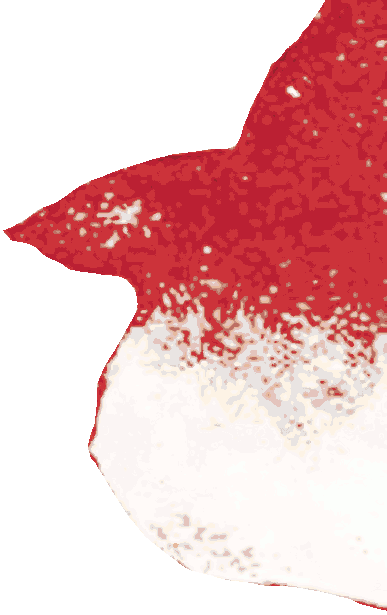
Cardinal |
- The Medici family finances had taken an even worse turn
under the rule of Lorenzo's eldest son, Piero the Unfortunate,
which led to their exile.
- However, their potential path
to power emerged when Lorenzo's second son, Giovanni de'
Medici (1475-1521) ascended to the position of cardinal,
opening a new chapter in the family's storied history.
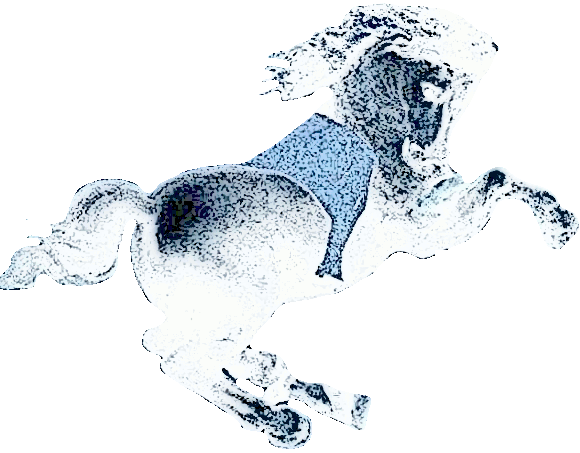
Medicis returned to power in 1512 |
- The Medicis returned to power in 1512-13 and the Medici dynasty continued
on, and family members served as dukes of Florence and grand dukes of Tuscany from the early 1530s to 1737.
-
During this period, in addition to backing artists, the Medicis helped support scientists, such as the astronomer and physicist Galileo Galilei.
- In the early 1600s, Galileo, who was cash-strapped and had a family to provide for, took a job tutoring Cosimo de Medici, the teenage son of Ferdinando I, grand duke of Tuscany.
In 1610, Galileo published “The Starry Messenger,”
a work describing recent discoveries he’d made with a
telescope, including the fact that Jupiter had moons,
which he named after the Medici. (history.com) |
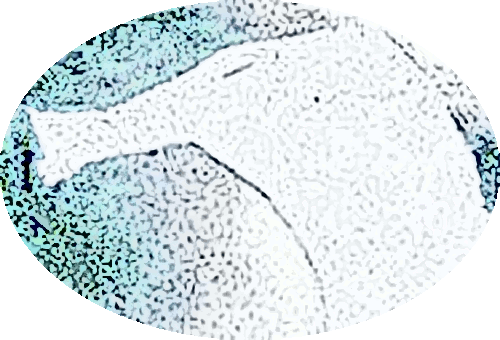
Tenure at the Vatican |
- In 1513, Giovanni de' Medici was raised to the papacy as
Pope Leo X.
- His ascension to the highest echelon of the
Catholic Church marked a moment of unparalleled influence for
the family and his remarkable achievements even surpassed his
father Lorenzo's successes.
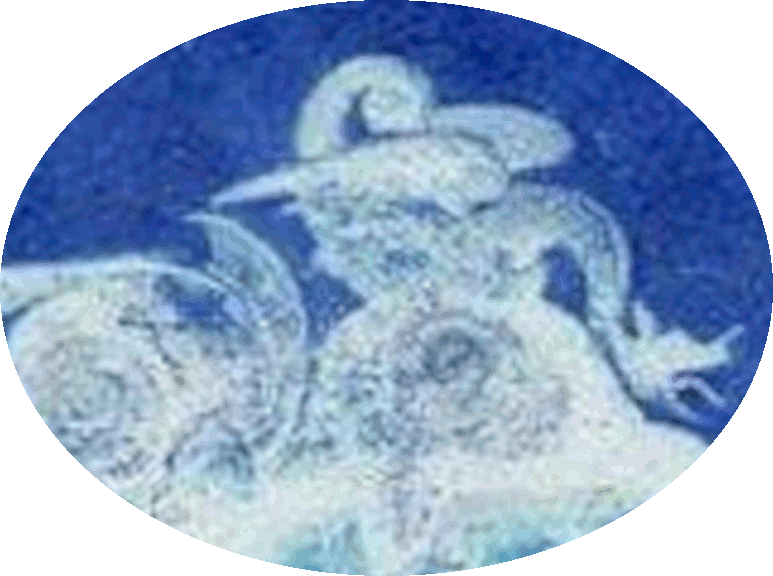
Arts |
- Pope Leo X's tenure at the Vatican, which commenced in
the early 16th-century, was distinquished by the Medicis
enduring tradition of artistic patronage.
- Despite the honorous duties inherent in the
papal role, Leo X remained deeply committed to the arts,
honoring the cultural legacy of his ancestors.
- Artist
Raphael created a renowned portrait of the Medici family
during this period.
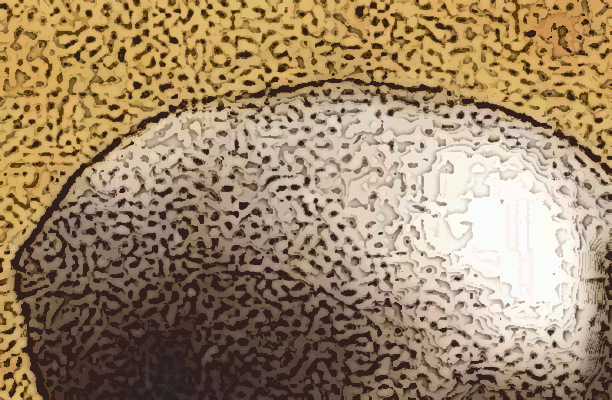
Lemon |
- However, Pope Leo X's time in the office intersected
with a turbulent period in the history of the Catholic Church.
- In Protestantism, Leo X was associated with the controversal
practice of selling indulgences, particularly those linked to
the reconstruction of St. Peter's Basilica in Rome.
- This
practice was aimed at raising funds for the lavish project and
this was a significant factor that led to the Protestant
Reformation.
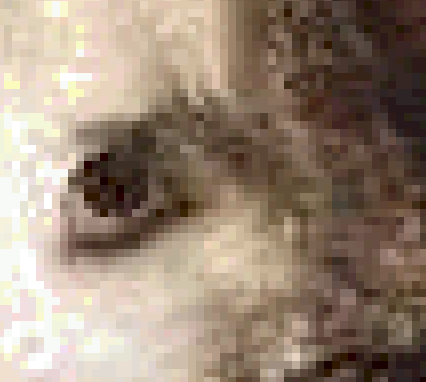
Leo bull |
- In 1520, Martin Luther's 95 Theses critiqued the sale of
indulgences, among other church practices.
- Luther
directly challenged the policies of Pope Leo X and in
response, Leo issued the papal bull Exsurge Domine,
which demanded that Luther retract 41 of his 95 theses.
-
Leo gave Luther 60 days to retract his theses and he rufused
so Leo excommunicated Luther.
- This further entrenched
the differences and conflicts between the Catholic Church and
the nascent Protestant movement.
- The papal bull
represented an outright rejection of the Reformation and set
the stage for ongoing religious conflicts.
Some historians believe that Leo never really took Luther's movement or his followers seriously, even until the time of his death in 1521. (Wikipedia) |
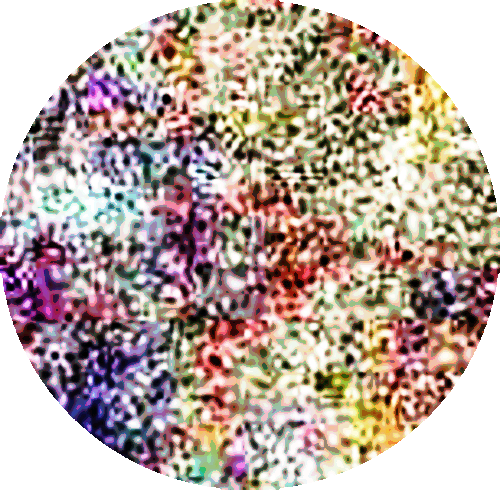
Popes have the finer things in life |
- The Protestant Christians were established as a result
of the Medicis who became 'popes' and with that were able to
finance the finer things in life.
- This convinced Martin
Luther to take action and cause the split from the Catholic
church.
- Despite all, the Medicis were the most powerful
family in European history and the world would truly not be
the same without all their influence.
- Pope Leo X
continued on with the Medici tradition of fostering the arts.
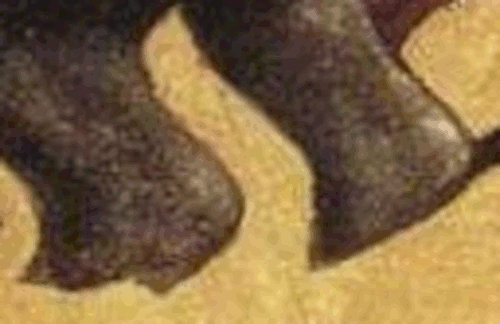
Big feet |
- After Leo X, a second Medici ascended to the papacy,
Clement VII, who presided over a tulmultuous era in the
Vatican's history.
- Clement was the illegitimate son of
Lorenzo's murdered brother, Giuliano, and was born as Giulio
de' Medici.
- Before becoming pope, Clement VII had
established himself as a skilled statesman serving with
distinction as the chief advisor to his cousin, Leo X, during
his papacy and to Pope Adrian VI from 1522 to 1523.
-
Clement's reign, which began in 1524, at the tail end of the
Italian Renaissance, was characterized by a series of
political, military and religious challenges that had profound
implications for Christianity and world politics.
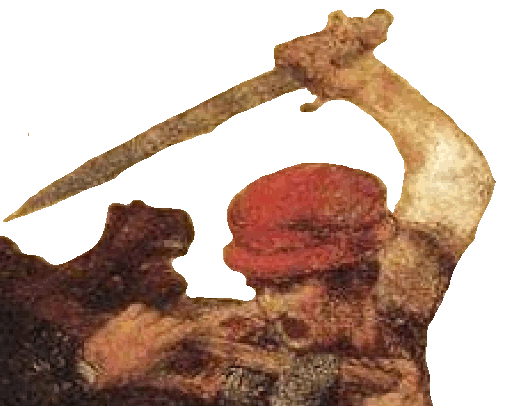
Henry VIII and his ermine |
- By the time Clement VII took over, the Protestant
Reformation was quickly spreading and the Catholic Church was
nearing bankruptcy and Italy was under the threat of foreign
invasions.
- This also coincided with a power struggle
between the Holy Roman Emperor Charles V and Francis I of
France as well as Turkish invasions led by Suleiman I the
Magnificent which severely hampered Clement's efforts.
-
Further complicating matters was King Henry VIII of England's
controversial divorce from Anne Boleyn which led to England's
break from the Catholic Church.
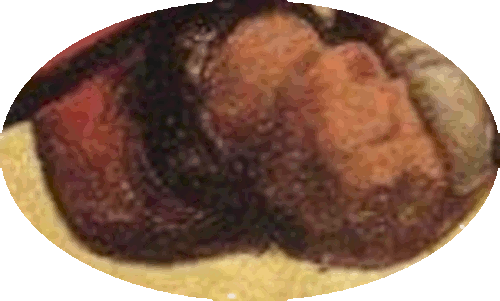
Sack of Rome 1527 |
- The height of Clement's challenges came in 1527 with the
Sack of Rome during wbich Clement himself was imprisoned.
-
His eventual escape from Castel Sant'Angelo led to a
compromised position where he allied with Charles V, his
former captor, diminishing the independence of the chruch and
the papal state.
- In the Medici tradition, Clement VII was
another family patron of the arts commissioning works from
renowned artists like Raphael, Benvenuto Cellini and Michelangelo,
including the iconic The Last Judgment in the Sistine
Chapel.

Earth revolves around the sun |
- In the realm of science, Clement VII is notable for his
1533 approval of Nicolaus Copernicus theory that the earth
revolves around the sun.
- After Clement's death, the
Medici family encountered a labyrinth of challenges leading to
their decline.
- The Medici Bank grappled with liquidity
issues that had been plaguing them since Cosimo de'
Medicis death in 1464.
- Liquidity was the lifeblood of
Renaissance banking and meant ready cash or assets, easily
convertable to cash and the bank's inability to maintain this
crucial balance signaled its impending crisis.
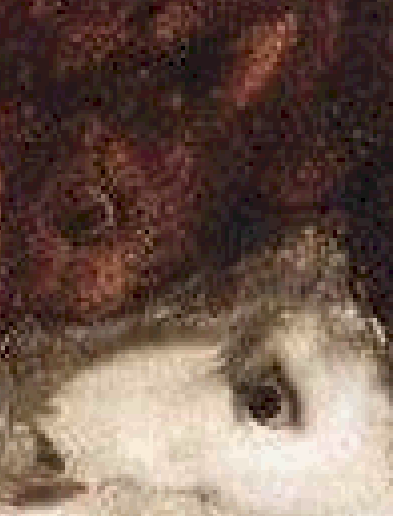
Lack of leadership |
- Additionally, the bank's successors lacked Cosimo's
financial acumen and indulged in lavish lifestyles draining
the bank's resources.
- Loans they had made to kings, such
as Yorkist Edward IV who was notoriously unreliable in meeting
his debt obligations, created financial exposures.
- These
were compounded when the bank later unwisely extended credit
to the Lancastian side of English royalty who lost the war, so
the debts were irrecoverable.
- The subsequent Tudor
dynasty did not honor these debts.
- Consequently, within 3 decades, the
Medici Bank failed and the family's woes were compounded by a
brewing succession crisis.
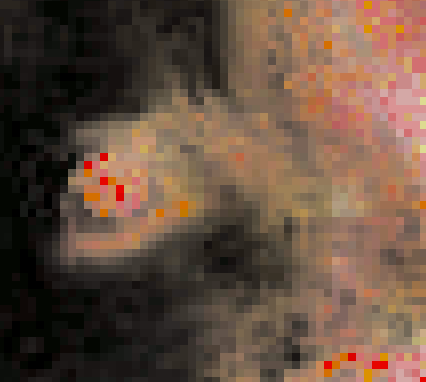
Dismantled |
- The absense of a male heir, left the
Medici lineage teetering on the brink of oblivion.
- This left two illegitimate sons and Catherine de' Medici
at the center of a familial power struggle.
- Catherine's
ascension to power was obstructed by the rigid gender norms of
the time and she could only watch as the family's influence
waned.
- This period, marred by uncertainty and political
instability, saw the Medici grip on Florence's political
levers loosen and rival factions within the city sensed an
opportunity to dismantle their once unassailable dominance.
Fortune brings in some boats that are not steered. (Shakespeare) |
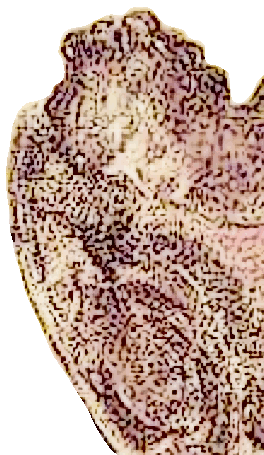
Medicis produced two queens |
- Catherine de’ Medici prevailed and was an influential monarch in 16th-century France and the mother of three French kings.
- Orphaned shortly after birth, Catherine was married at age 14 to Henry, the second son of King Francis I of France.
- Another Medici, Marie, was queen of France from 1600 until the 1610 assassination of her husband, King Henry IV.
- Marie then was appointed regent for her young son, Louis XIII, who in 1617 took power and exiled her.
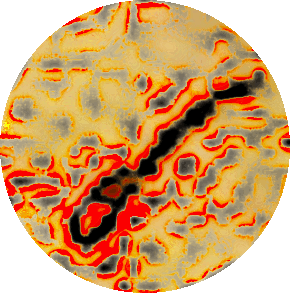
Family line goes up in flames |
- In 1737, after almost 300 years of Medici rule in Florence,
the dynasty ended with the death of Gian Gastone de’ Medici, the
7th family member to serve as grand duke of Tuscany.
- Gian Gastone, who came to power in 1723 and led a life of debauchery, died without any heirs.
- He was in ill health and had an apparent disinterst in
public affairs despite this his popularity among the Tuscan's
was undeniable.
- Gian Gastone's death heralded the
cessation of Medici rule, a dynasty that had shaped the
fortunes of Europe for centuries.
- Through an agreement of the leading European powers,
Gian Gastone was succeeded by Francis, duke of Lorraine; who later became the Holy Roman Emperor and the father of Marie Antoinette, queen of France.
Now where goes Flavio? These hours ‘til our
Brother’s union will I fear be fraught; But for a
stoup of wine to numb our nerves. (Shakespeare) |
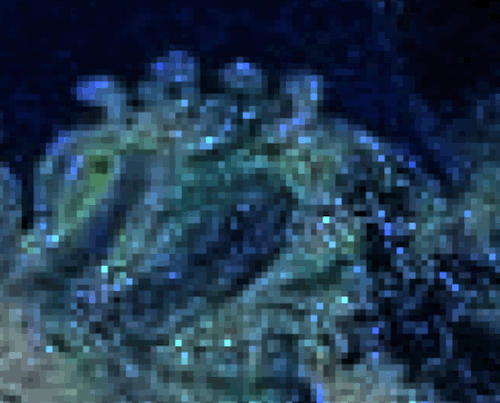
Enduring |
- The Medici did leave a legend of prosperity and
innovation and a willingness to share with the community and
the world and their legacy illustrates the profound impact of
wealth in shaping societies.
- Their architecture and art projects are
enduring and include St. Peter's Basilica in Rome, the Medici
Chapel designed by Michelangelo, and the
Cathedral of Santa Maria del Fiore (Duomo) in Florence, among
many others.
- The Medici contributions to the Florentine
skyline reinforce Florence's position as the 'Cradle of the
Renaissance.'
- They also left important artworks they
commissioned such as Botticelli's Prima Vera and
Birth of Venus, which epitomize Renaissance ideals of
beauty and humanism.
When Gian Gastone’s only sibling, Anna Maria Luisa de’ Medici, the last of the family line, passed away in 1743 without any children, she willed the Medicis’ enormous art collection and other treasures to the Tuscan state, on the condition they always remain in Florence.
(Elizabeth
Nix) |
|
|

